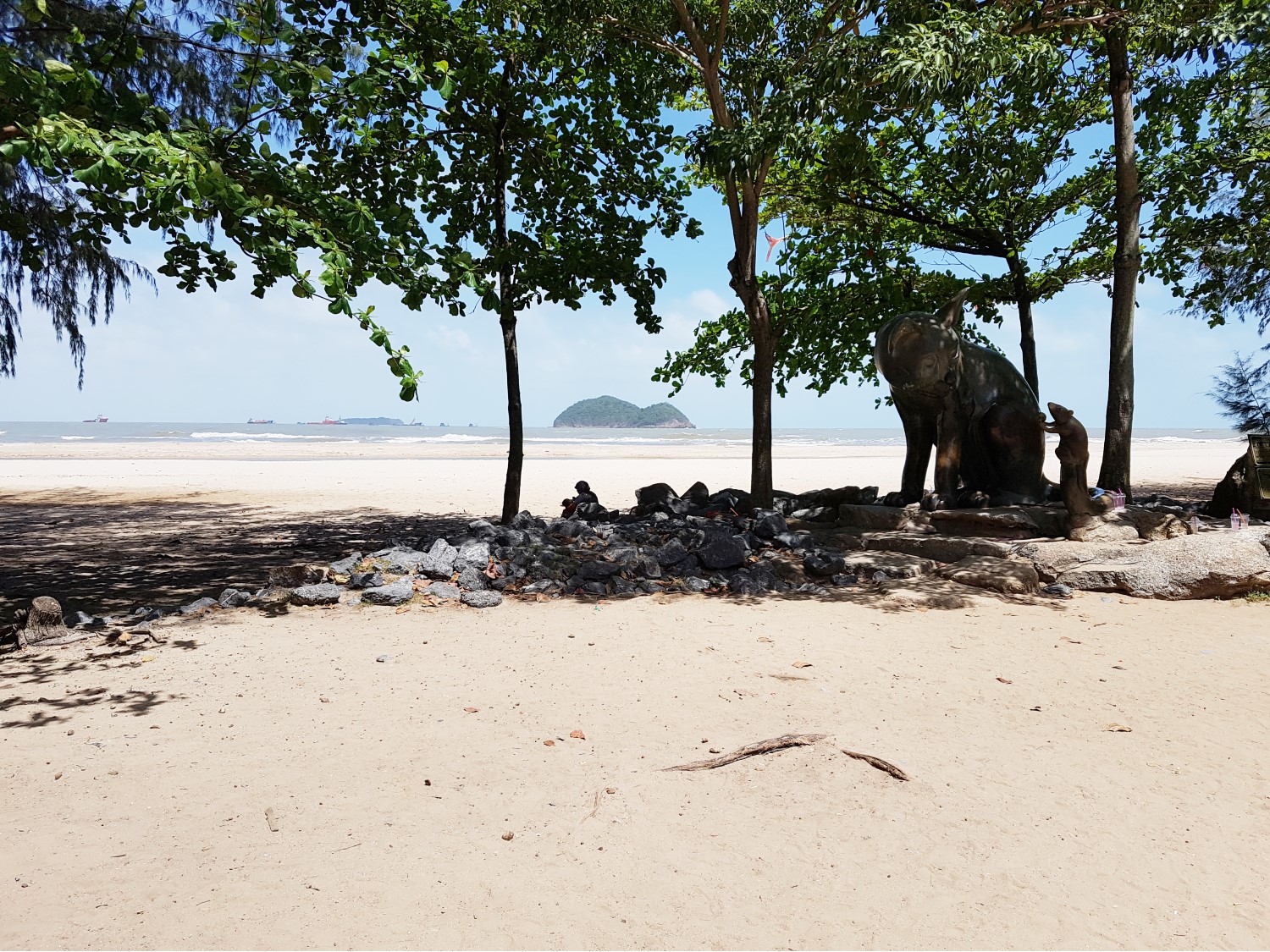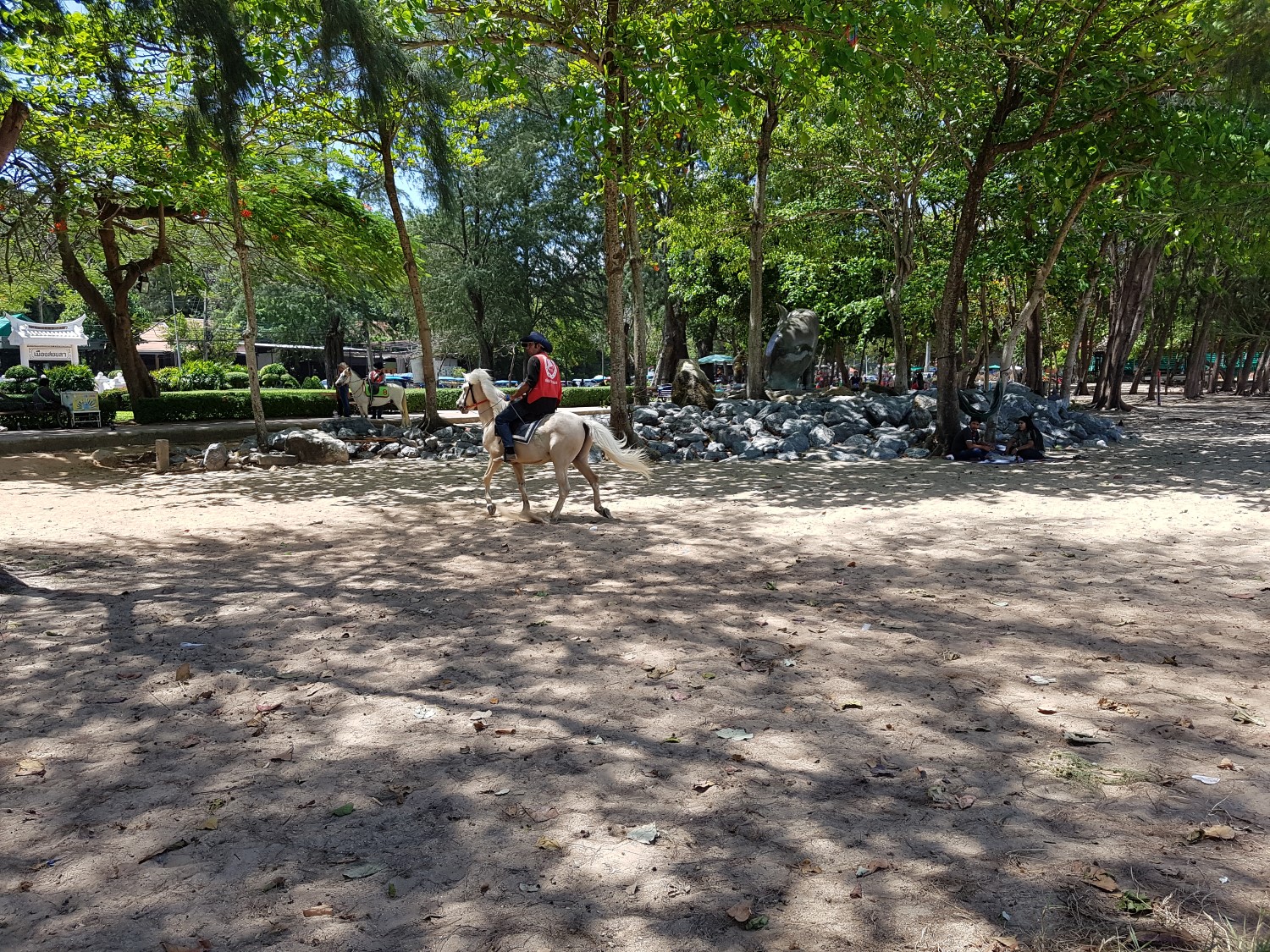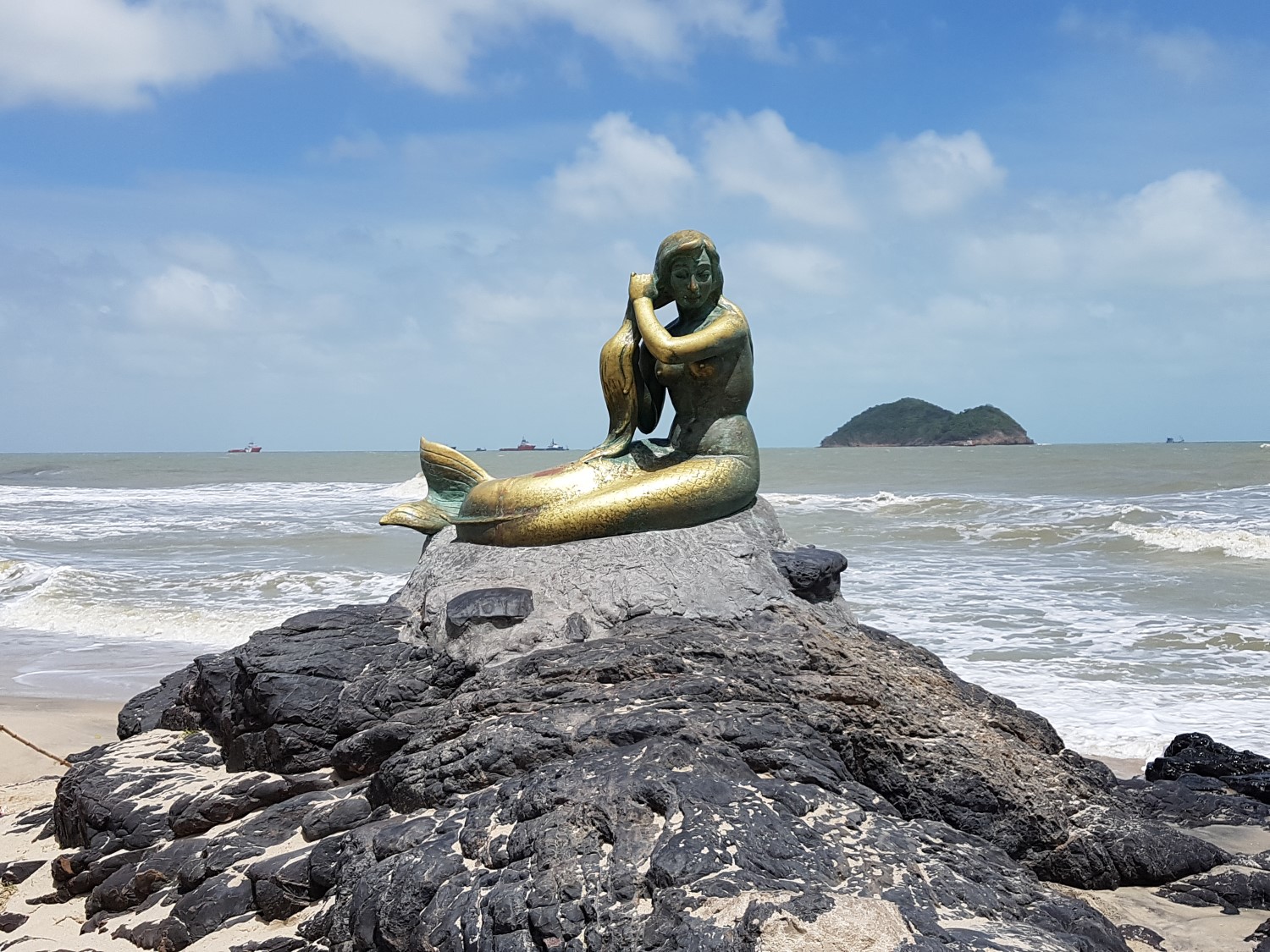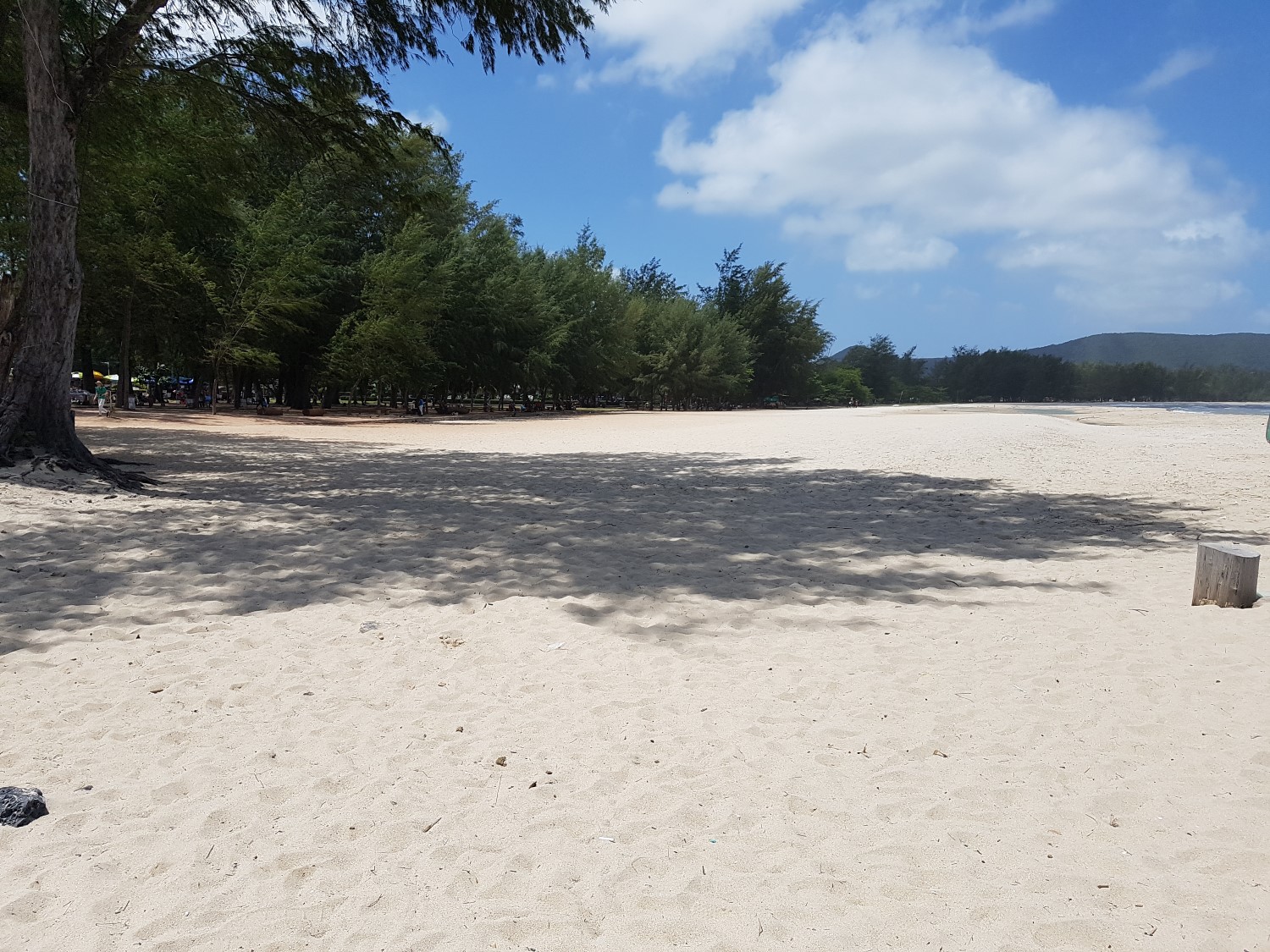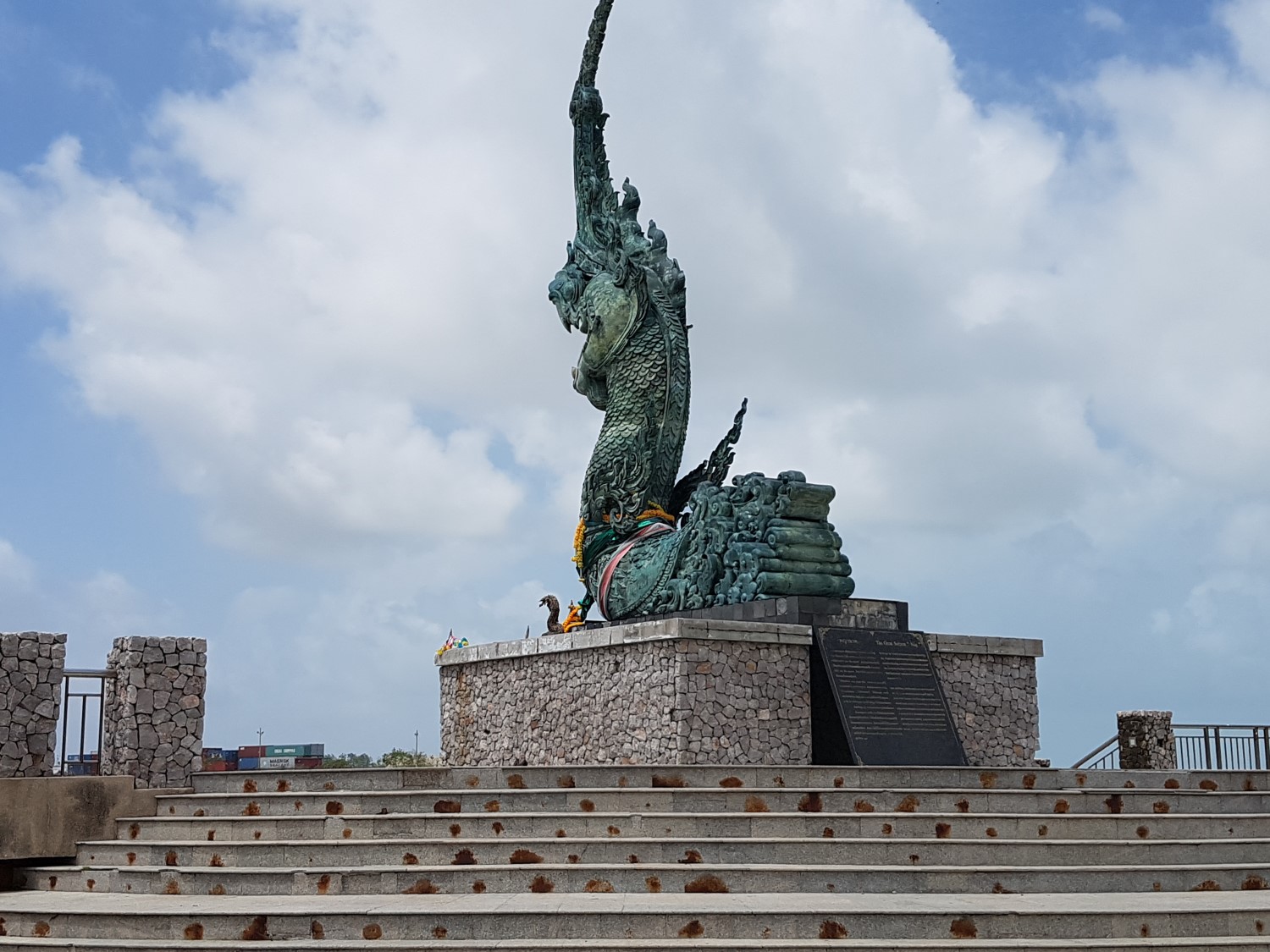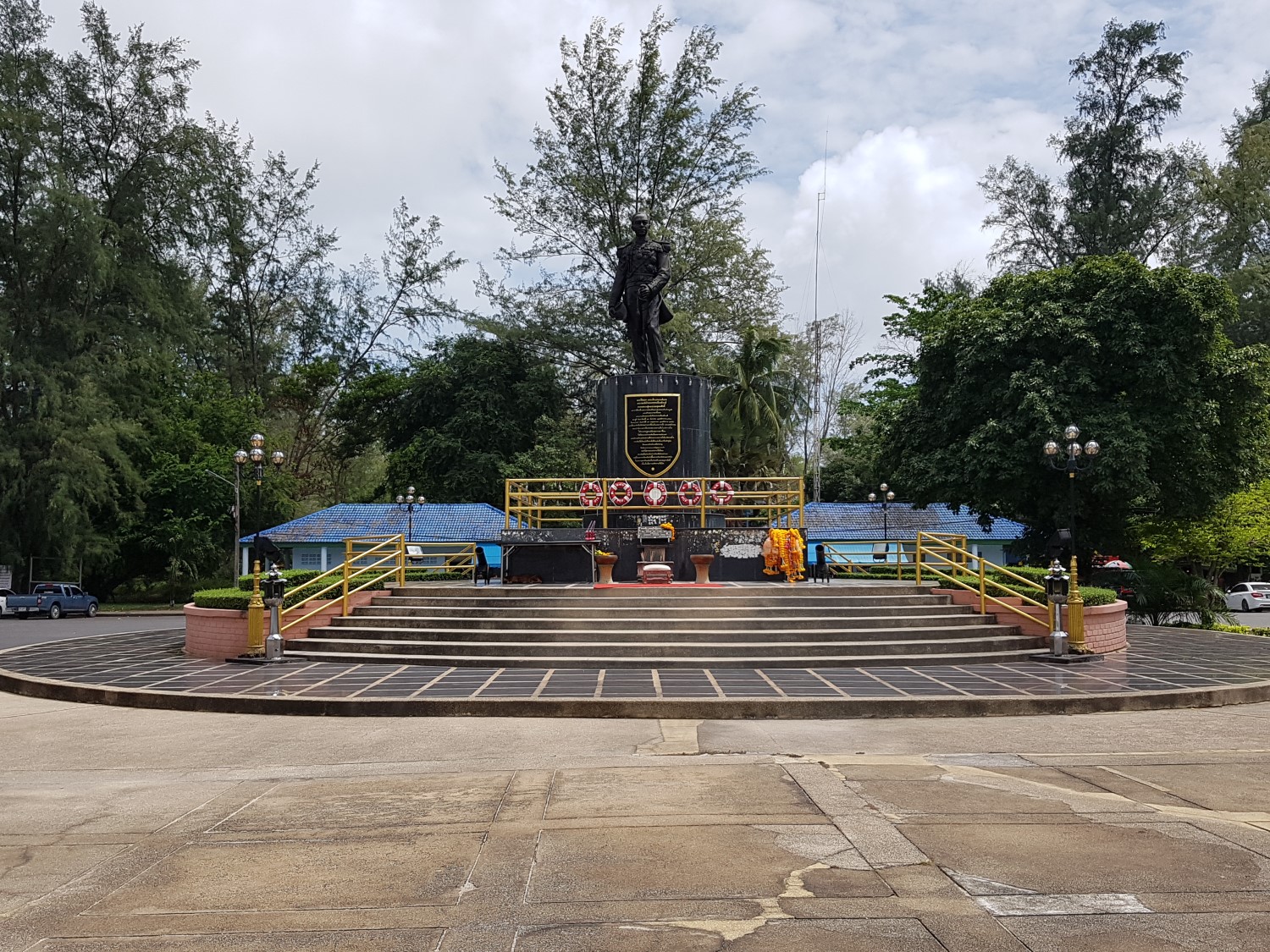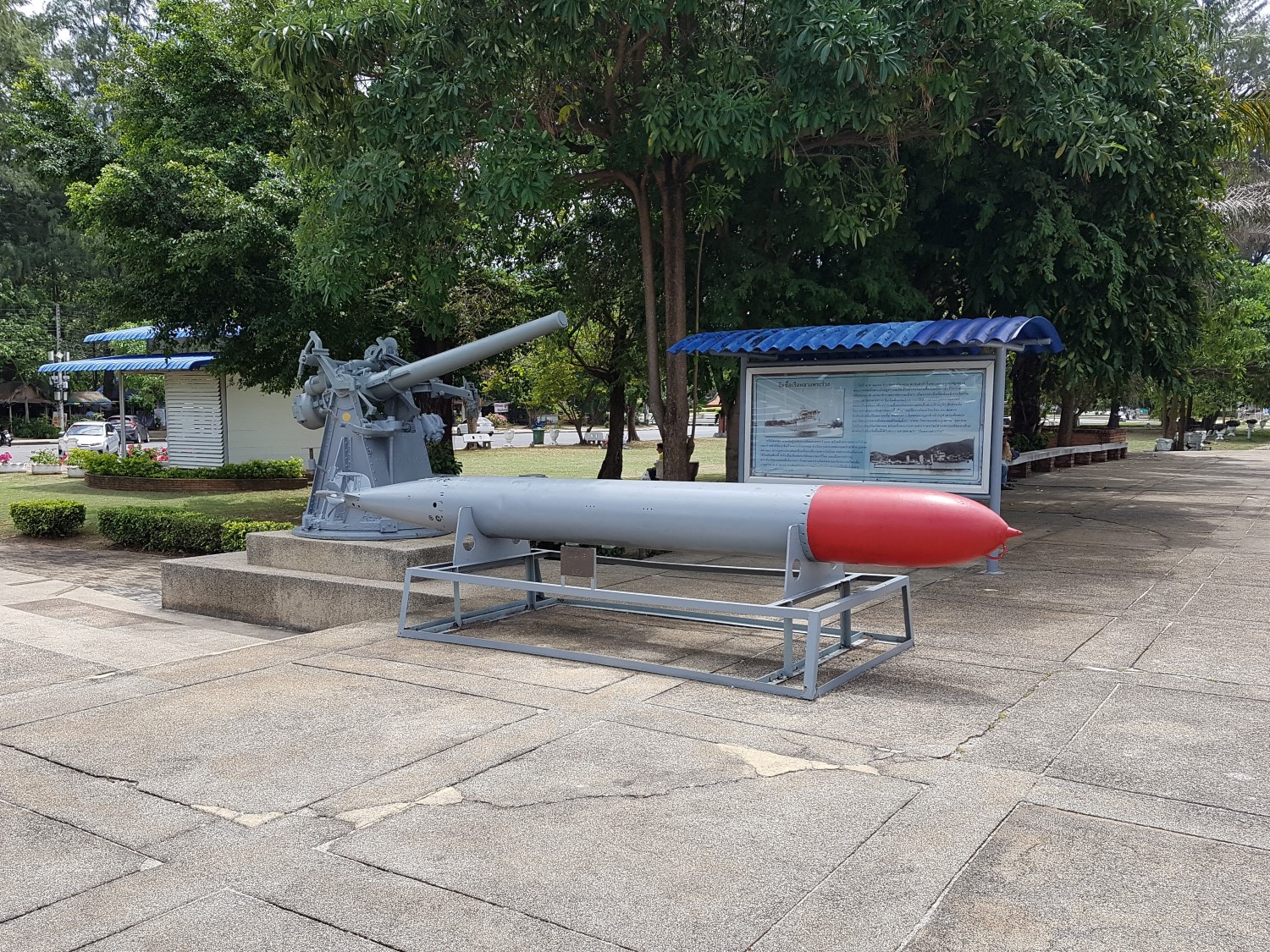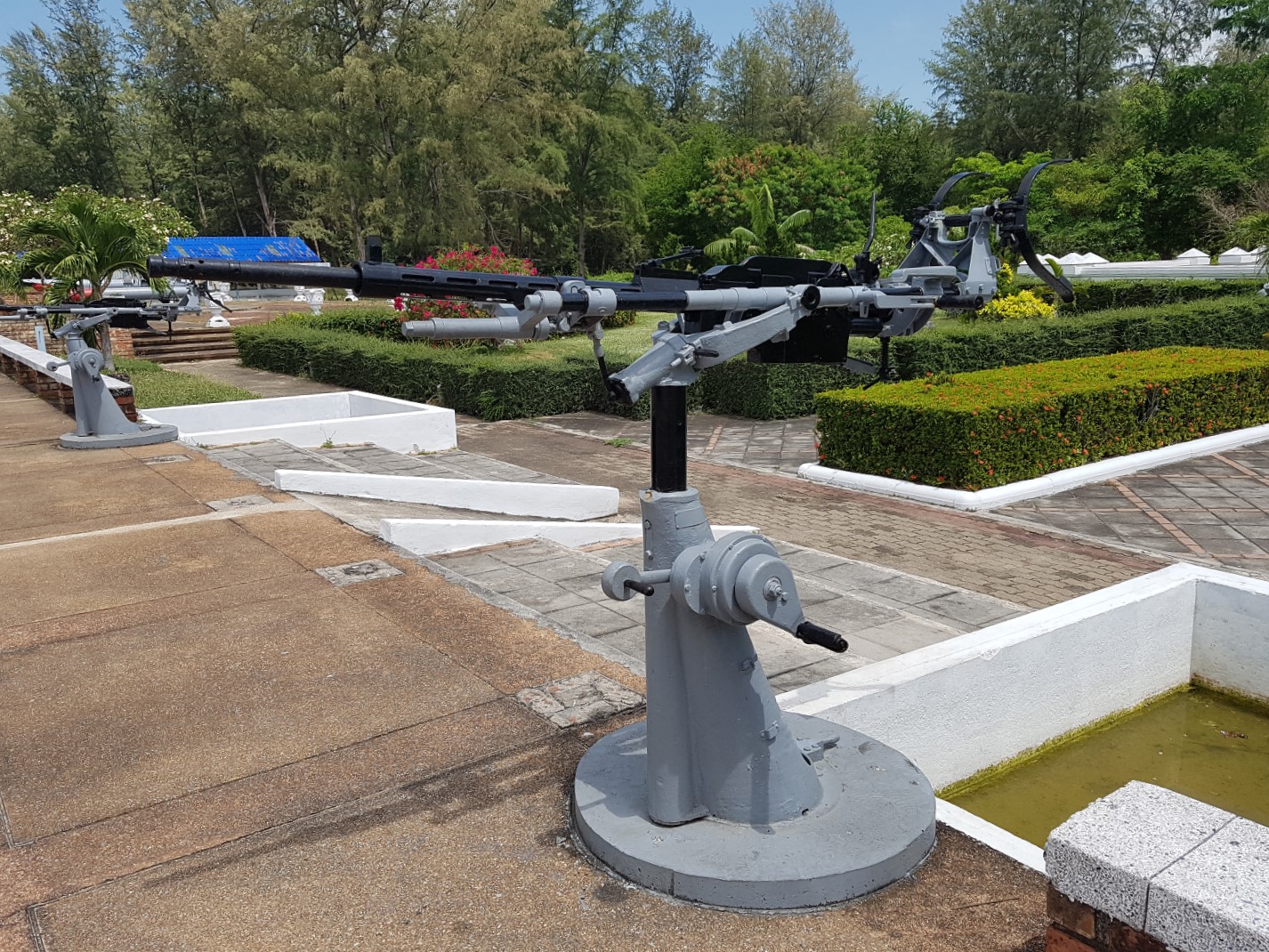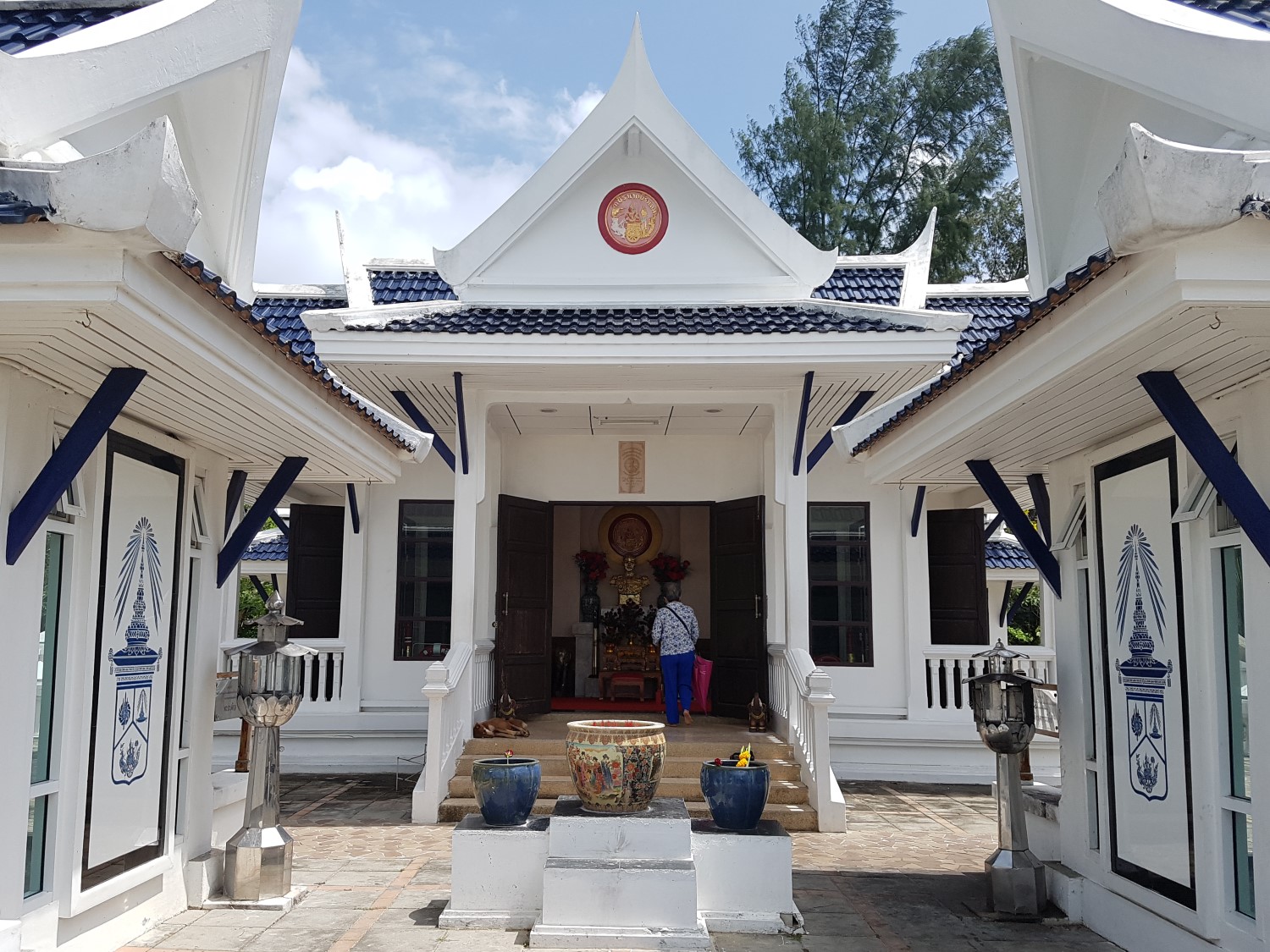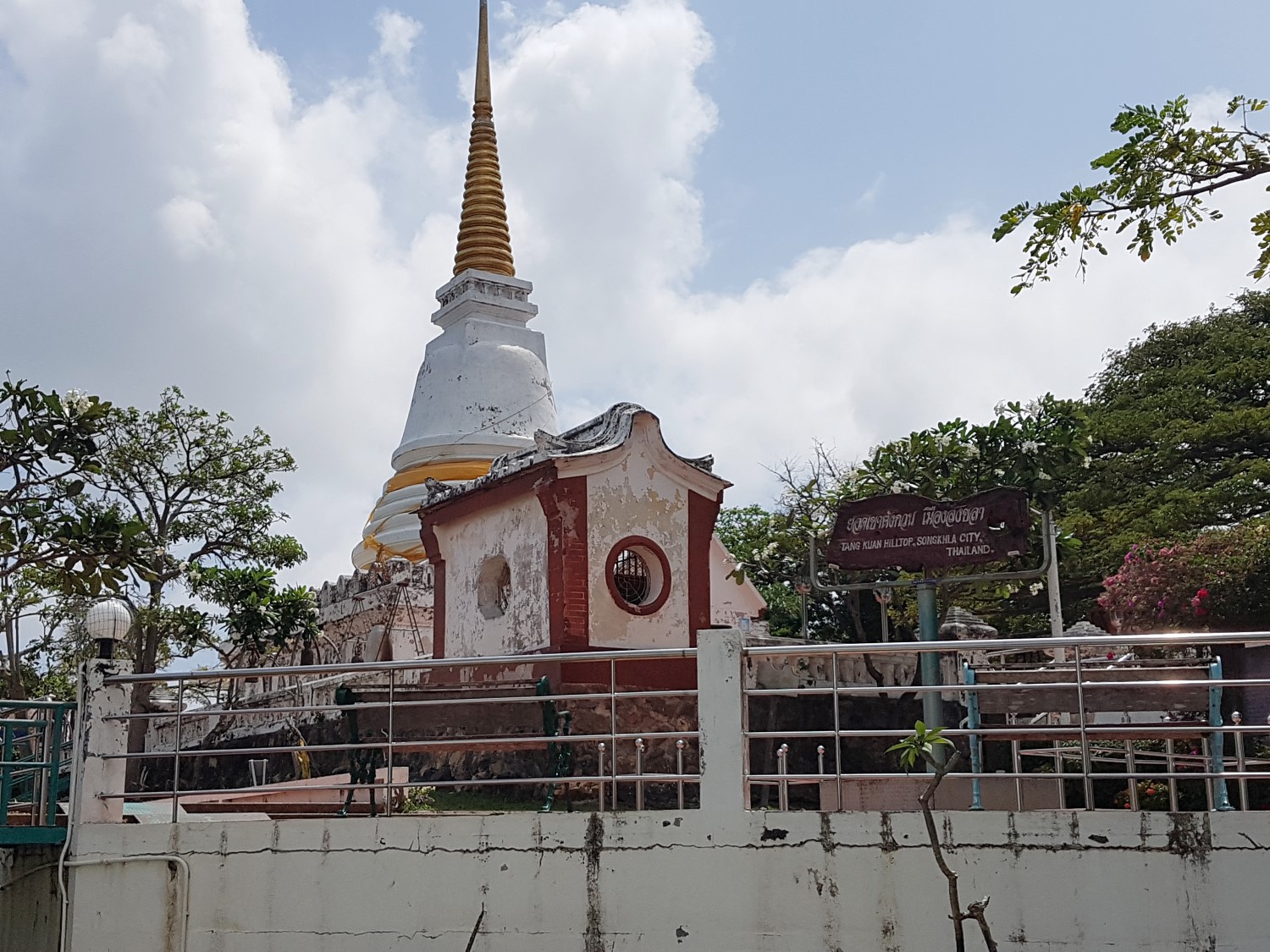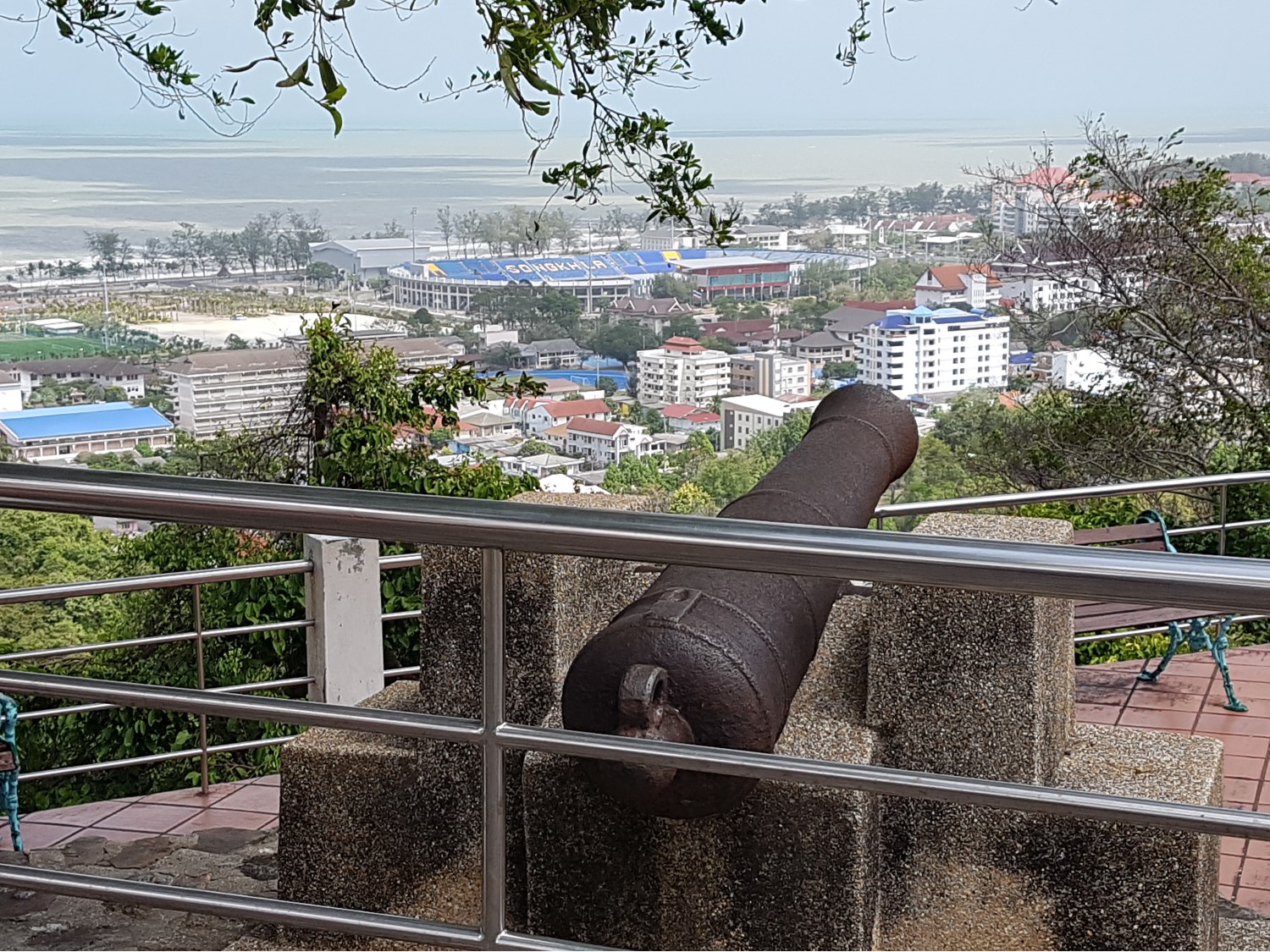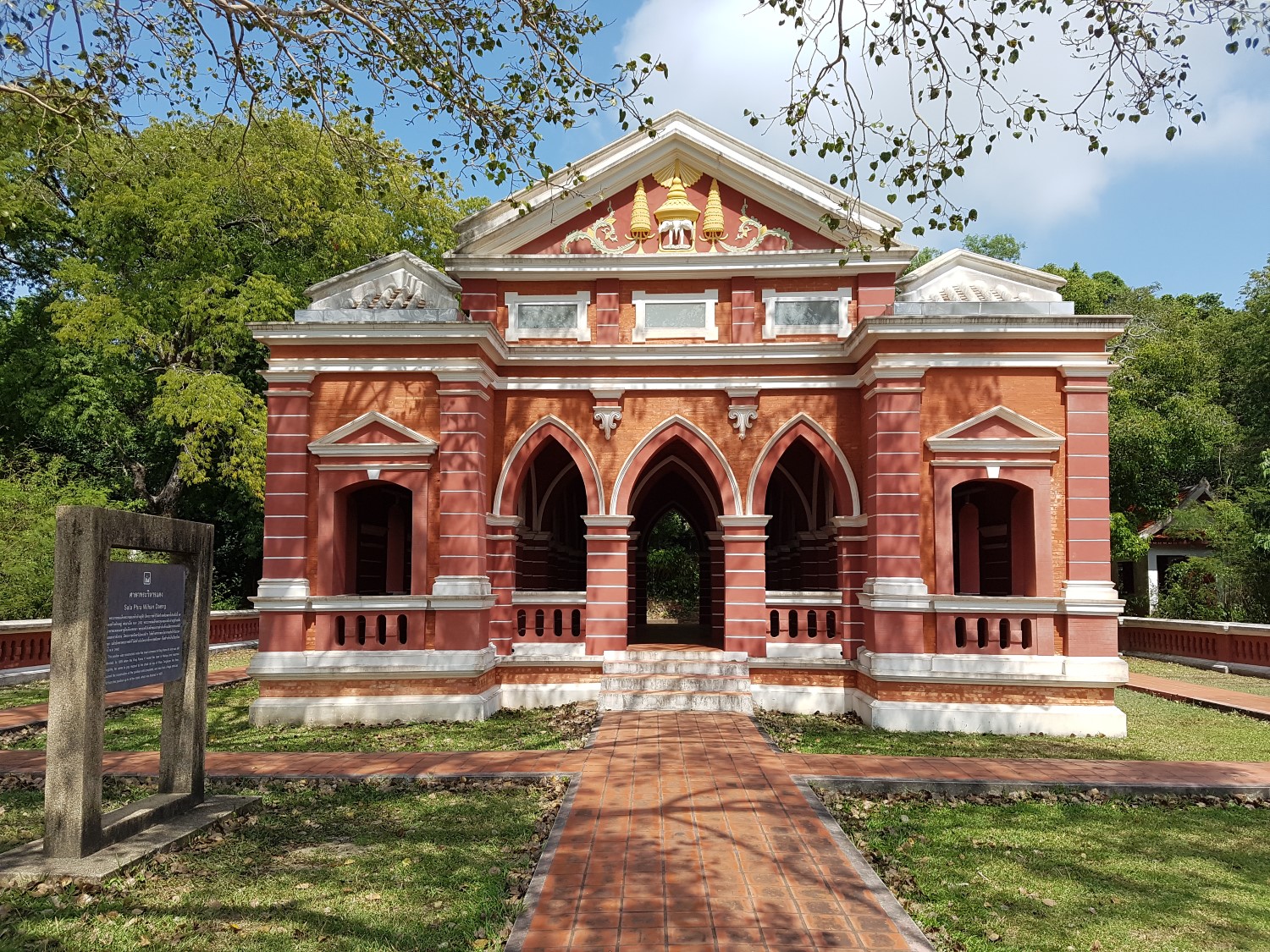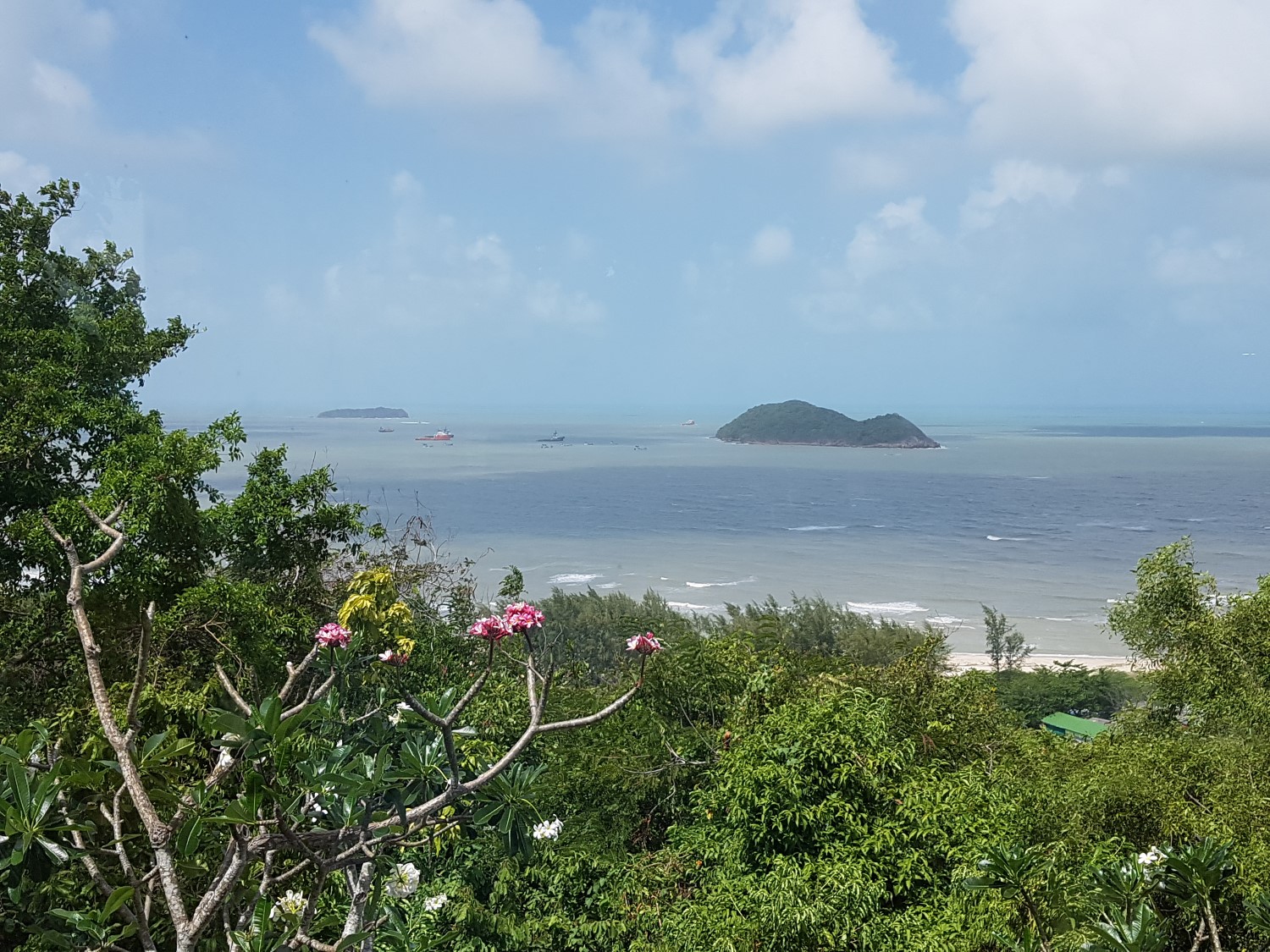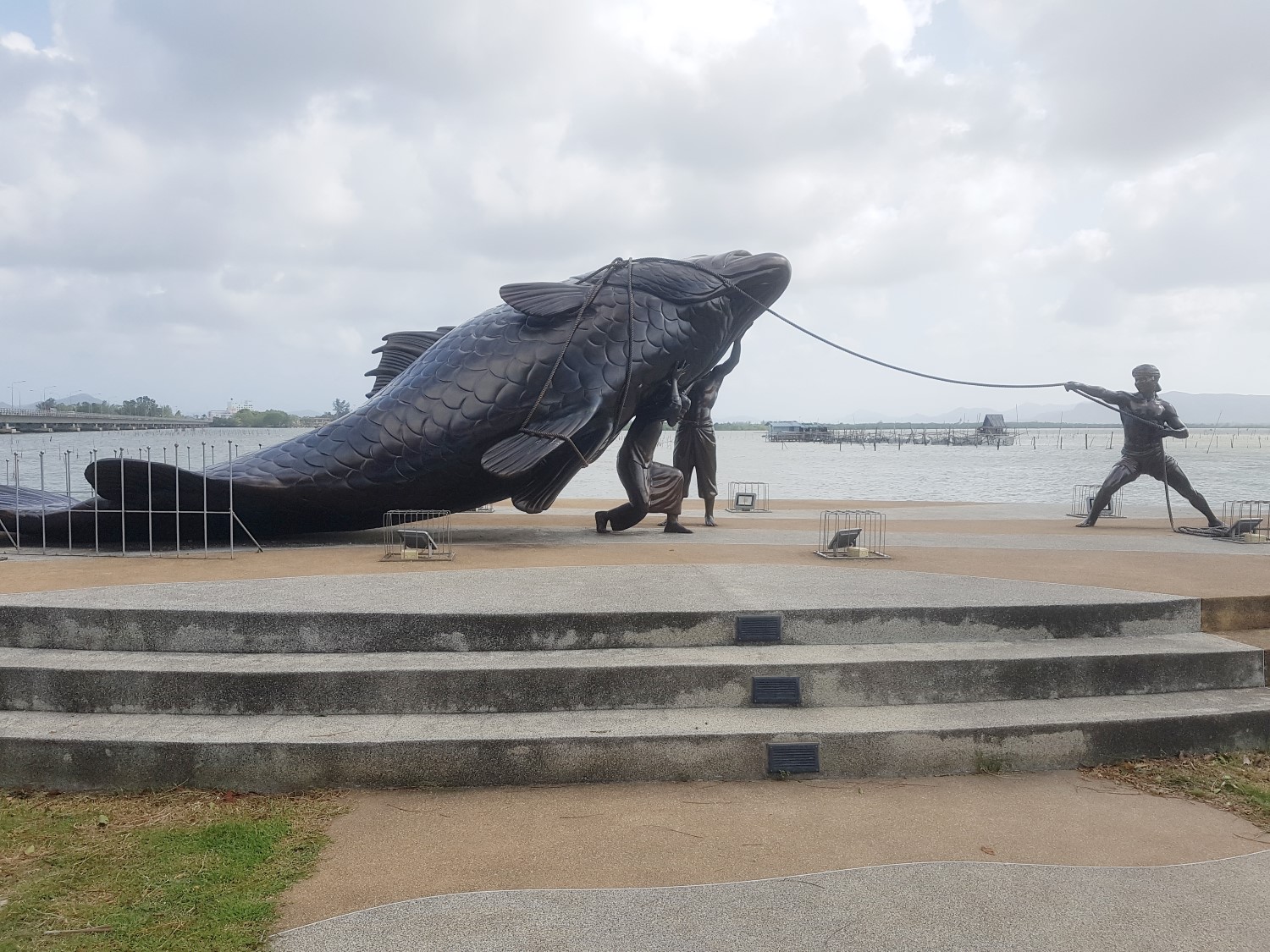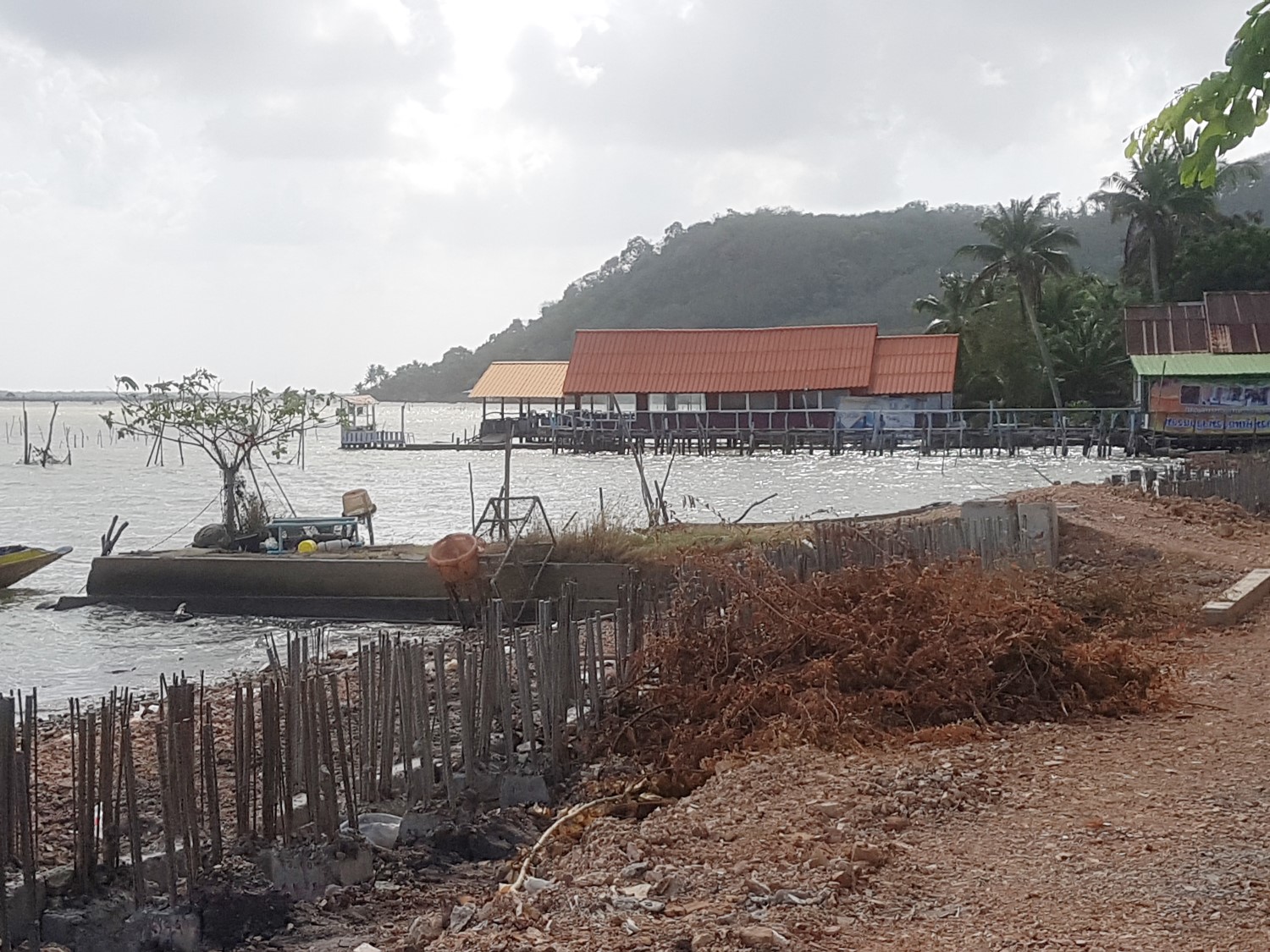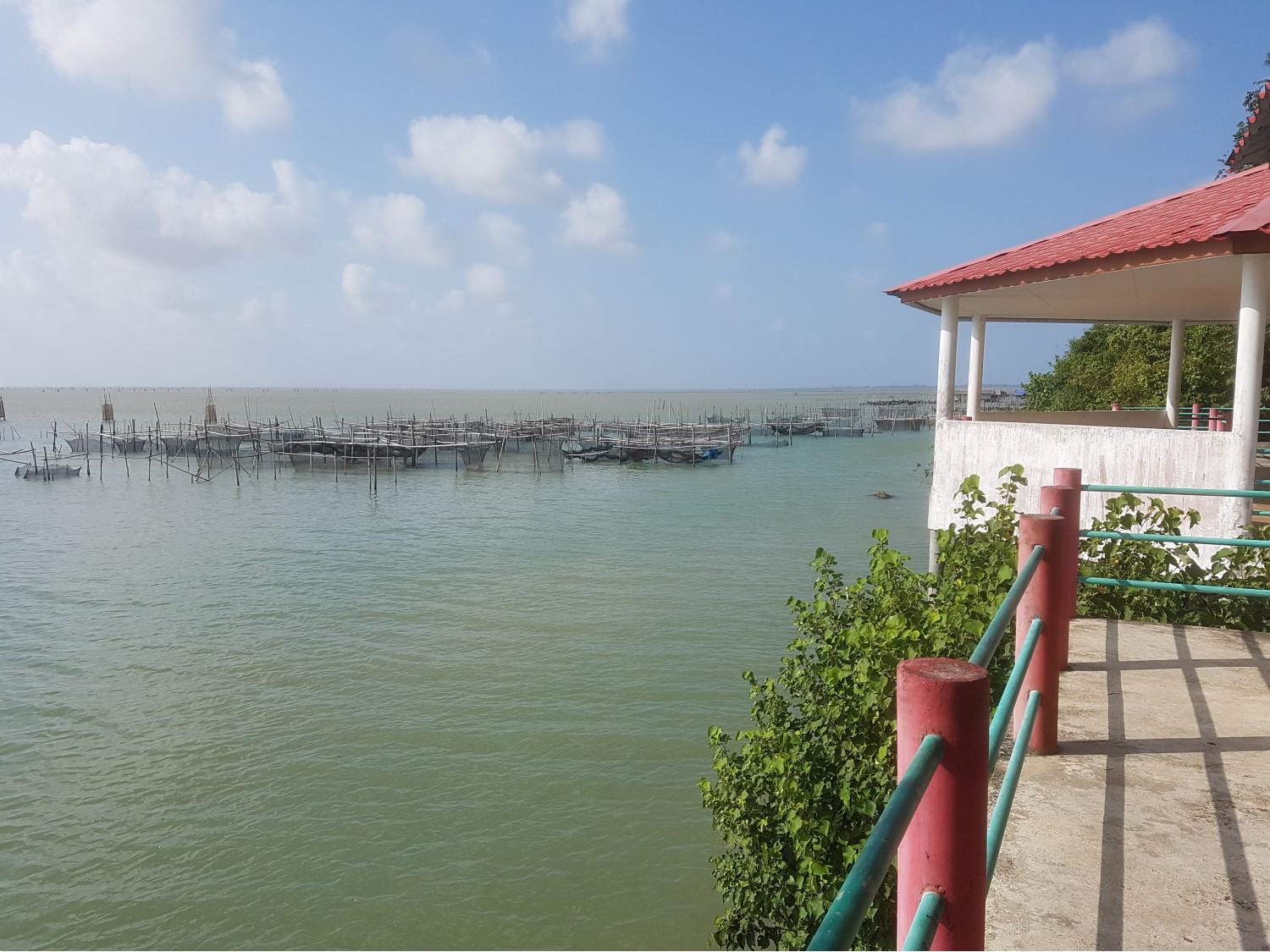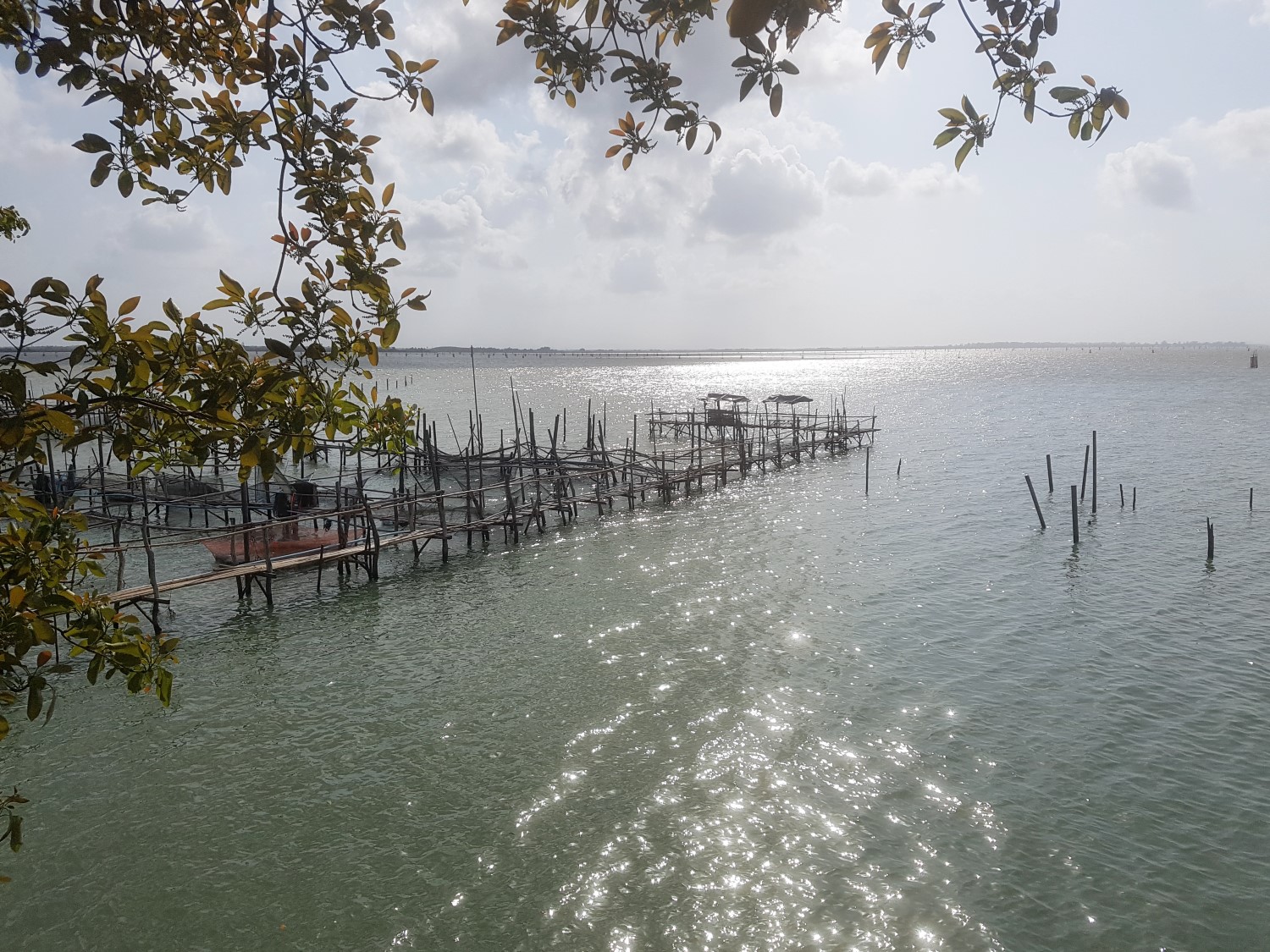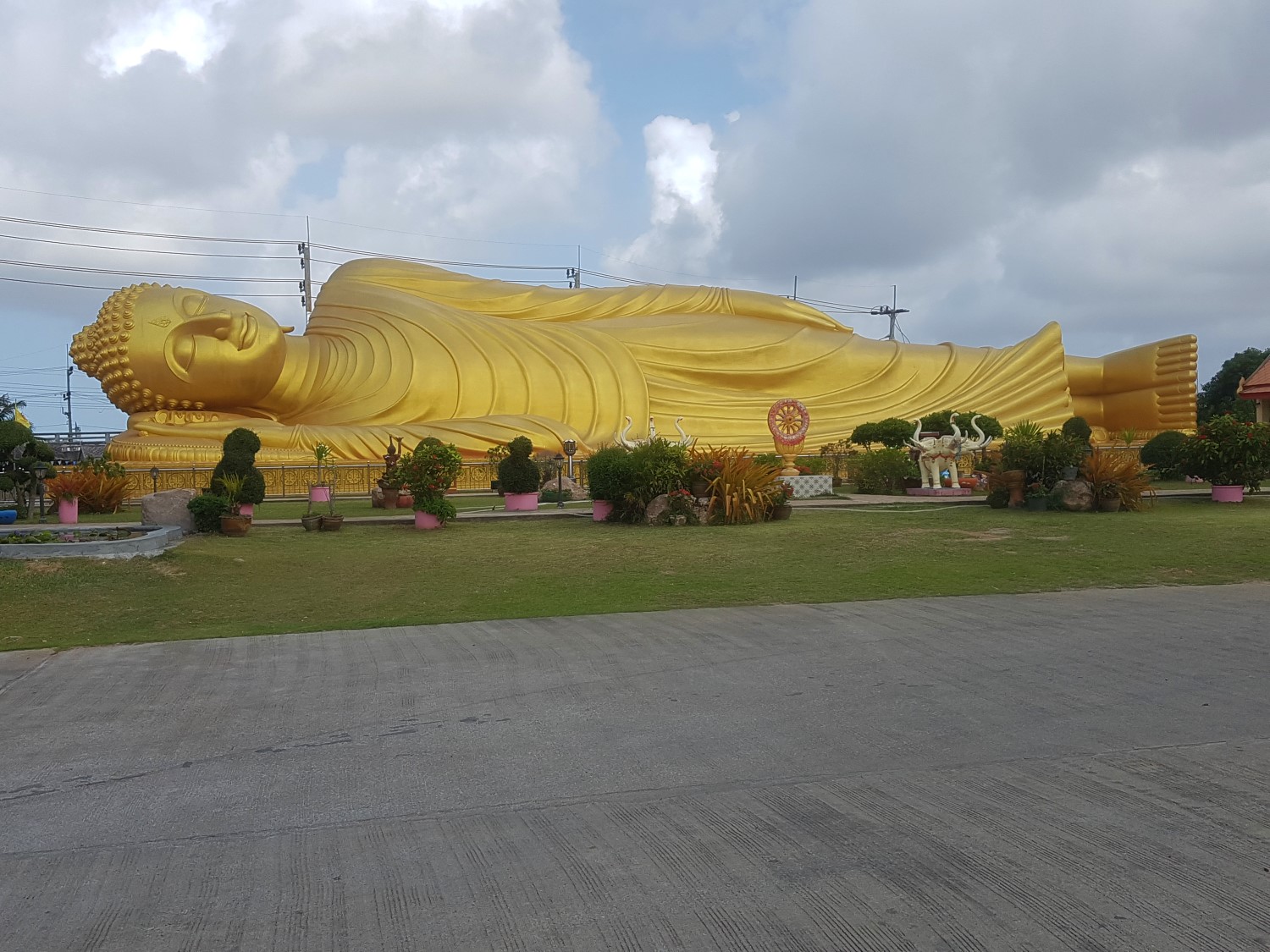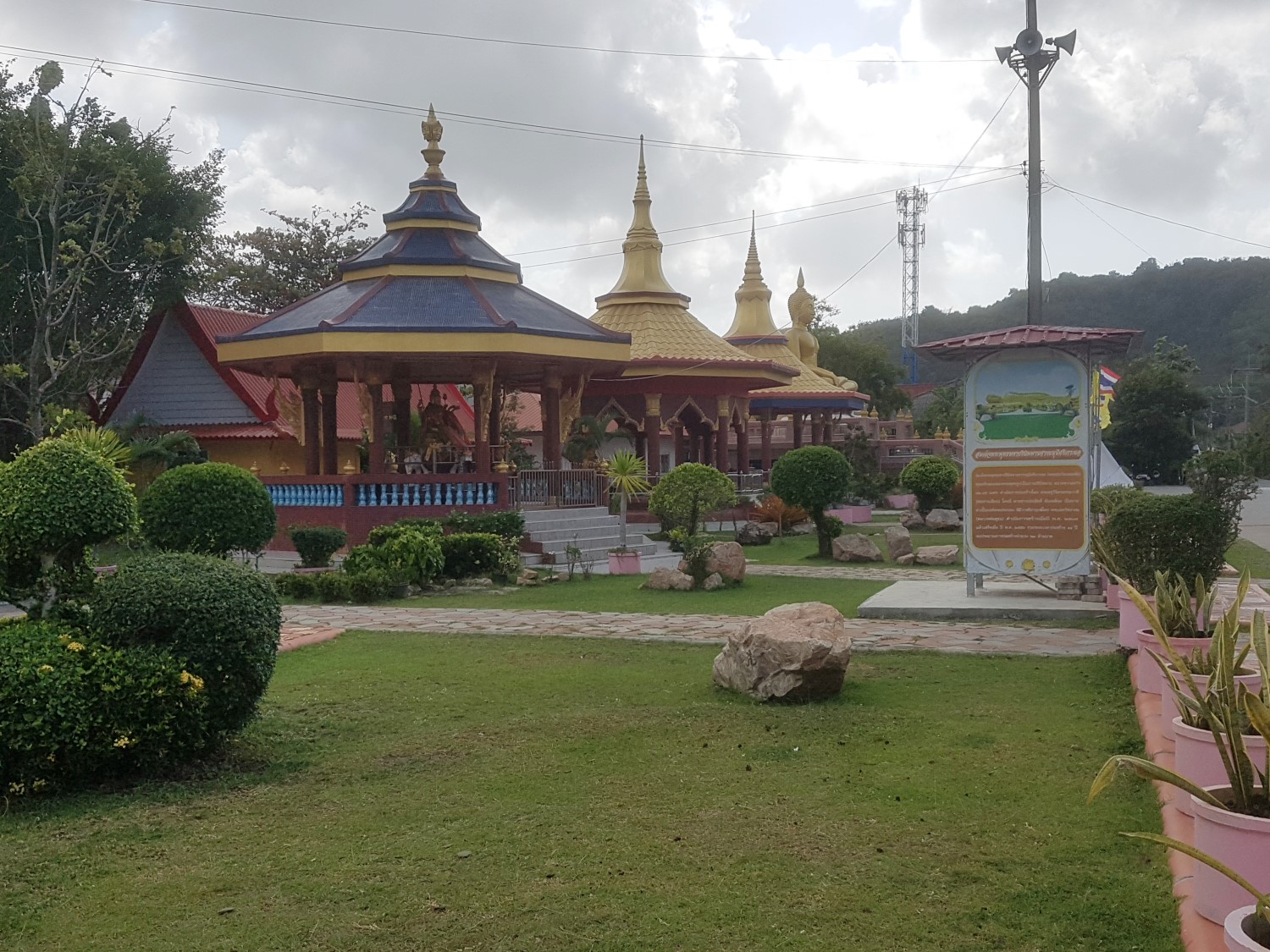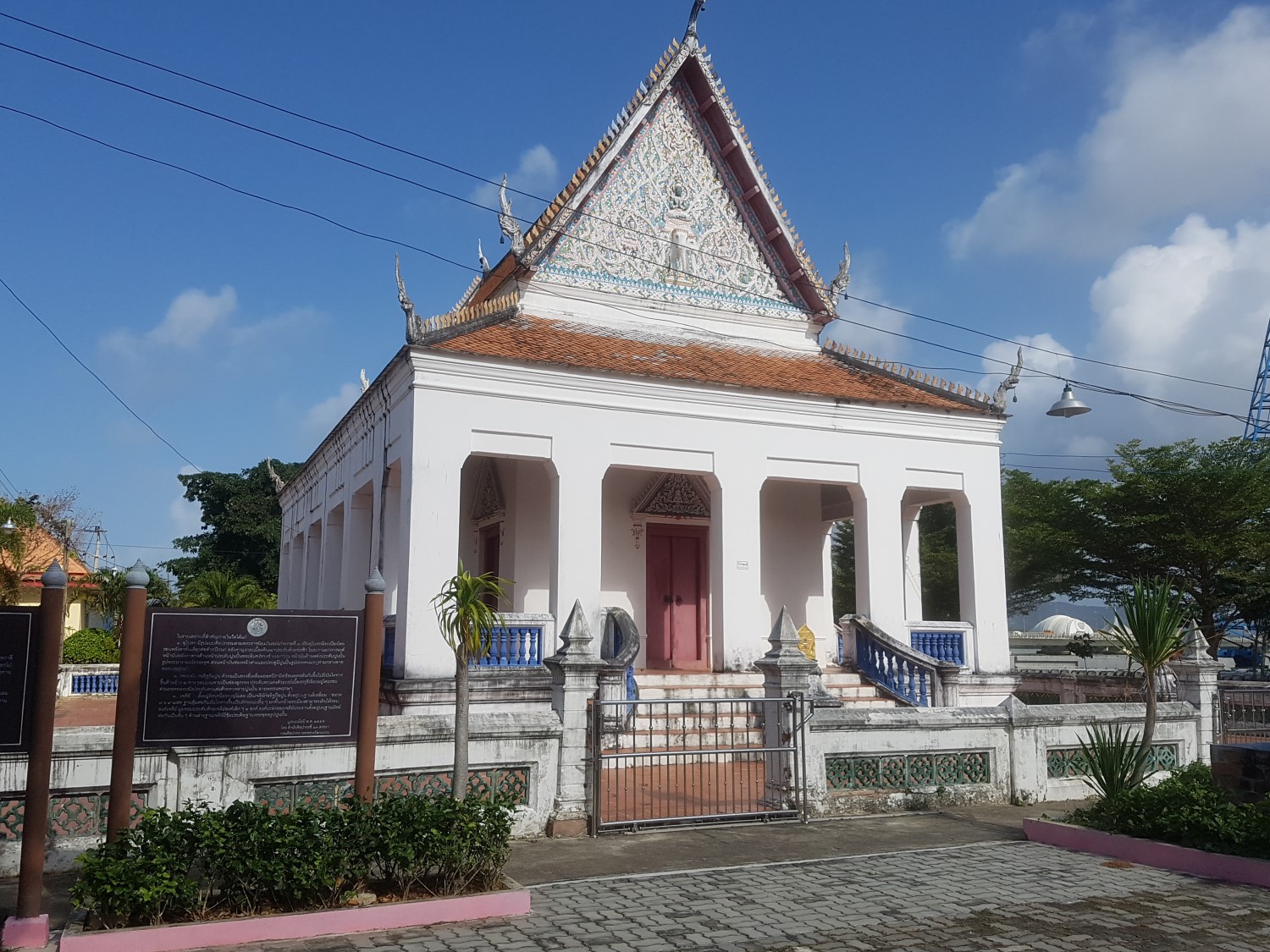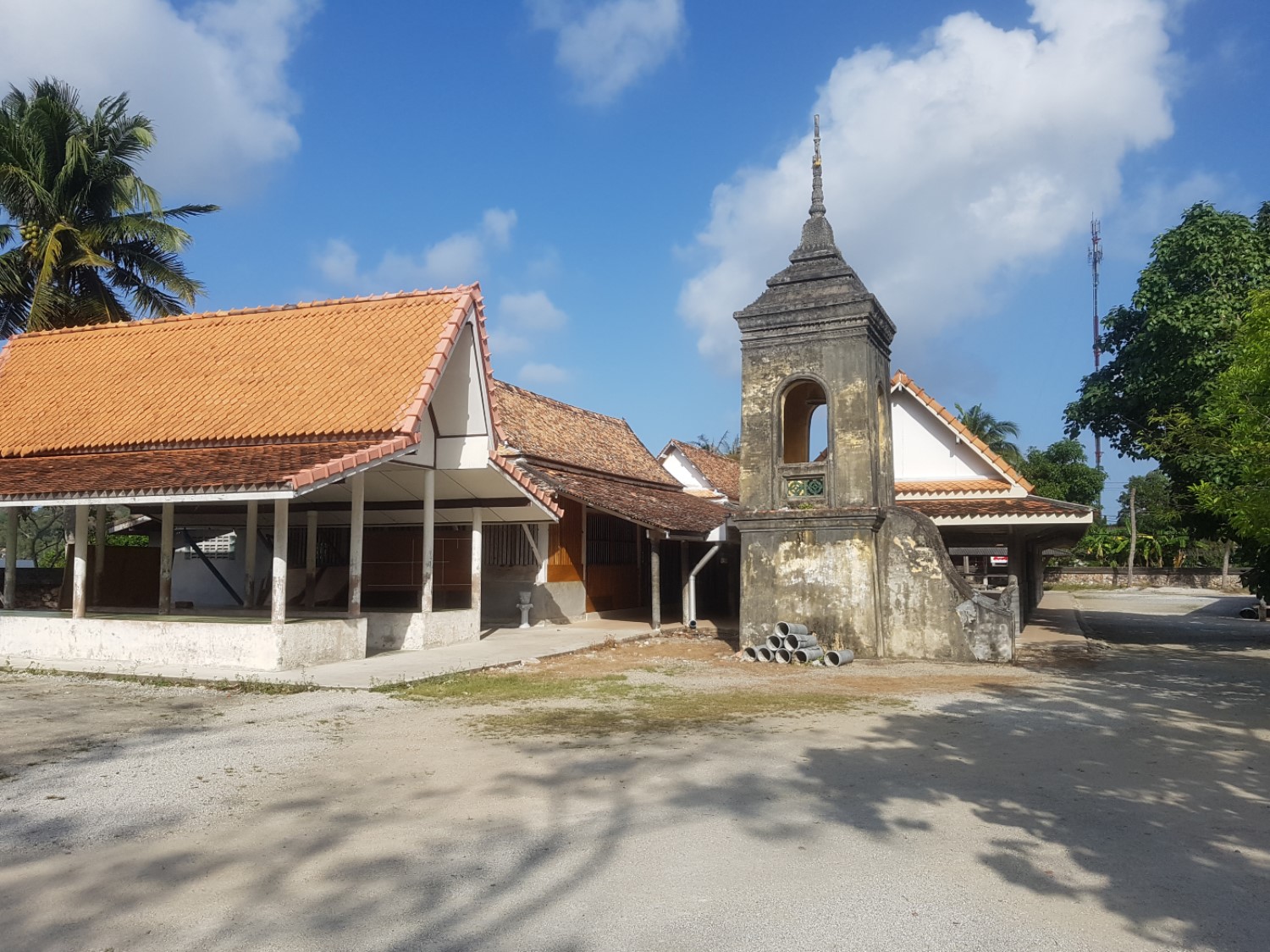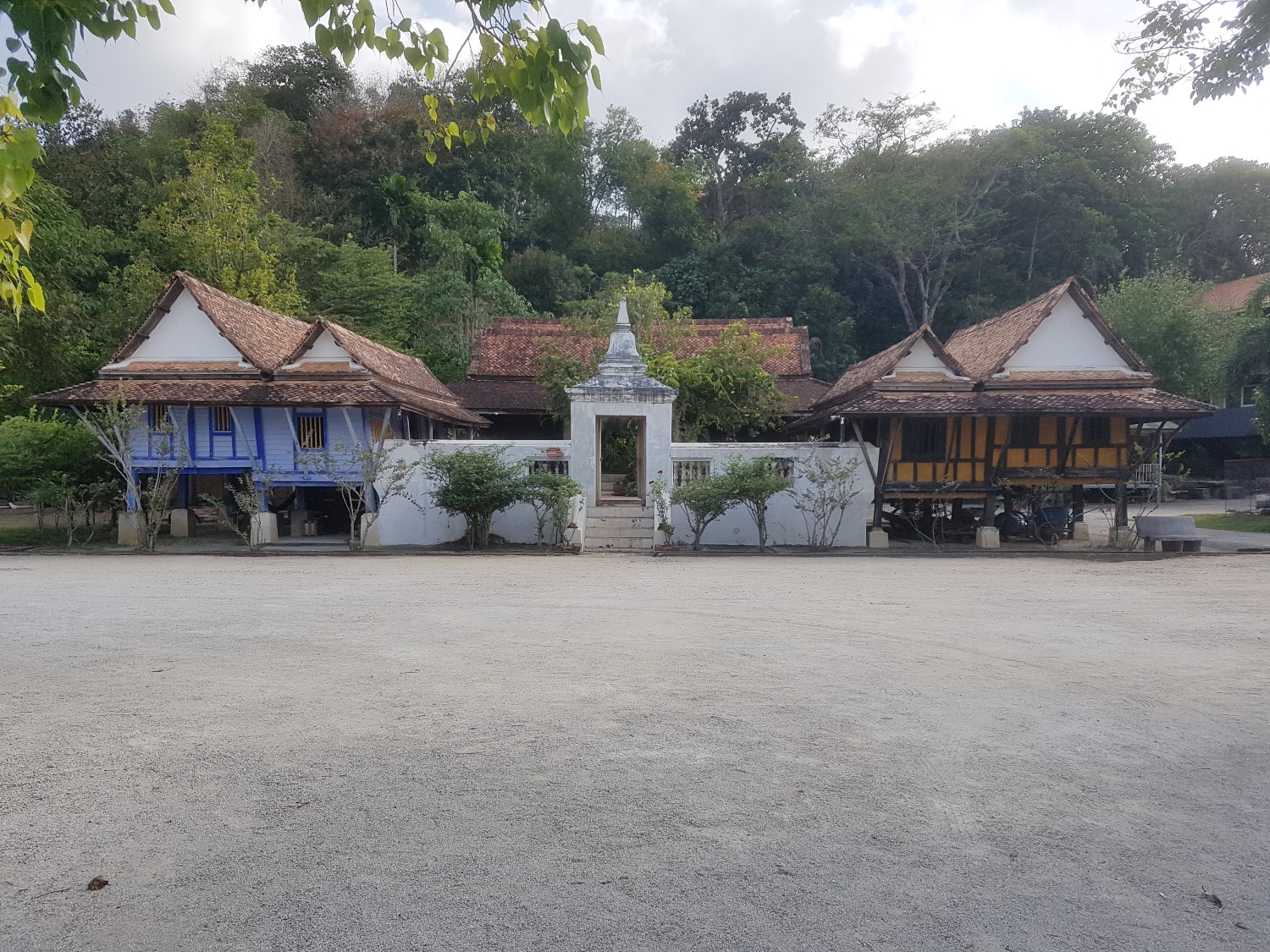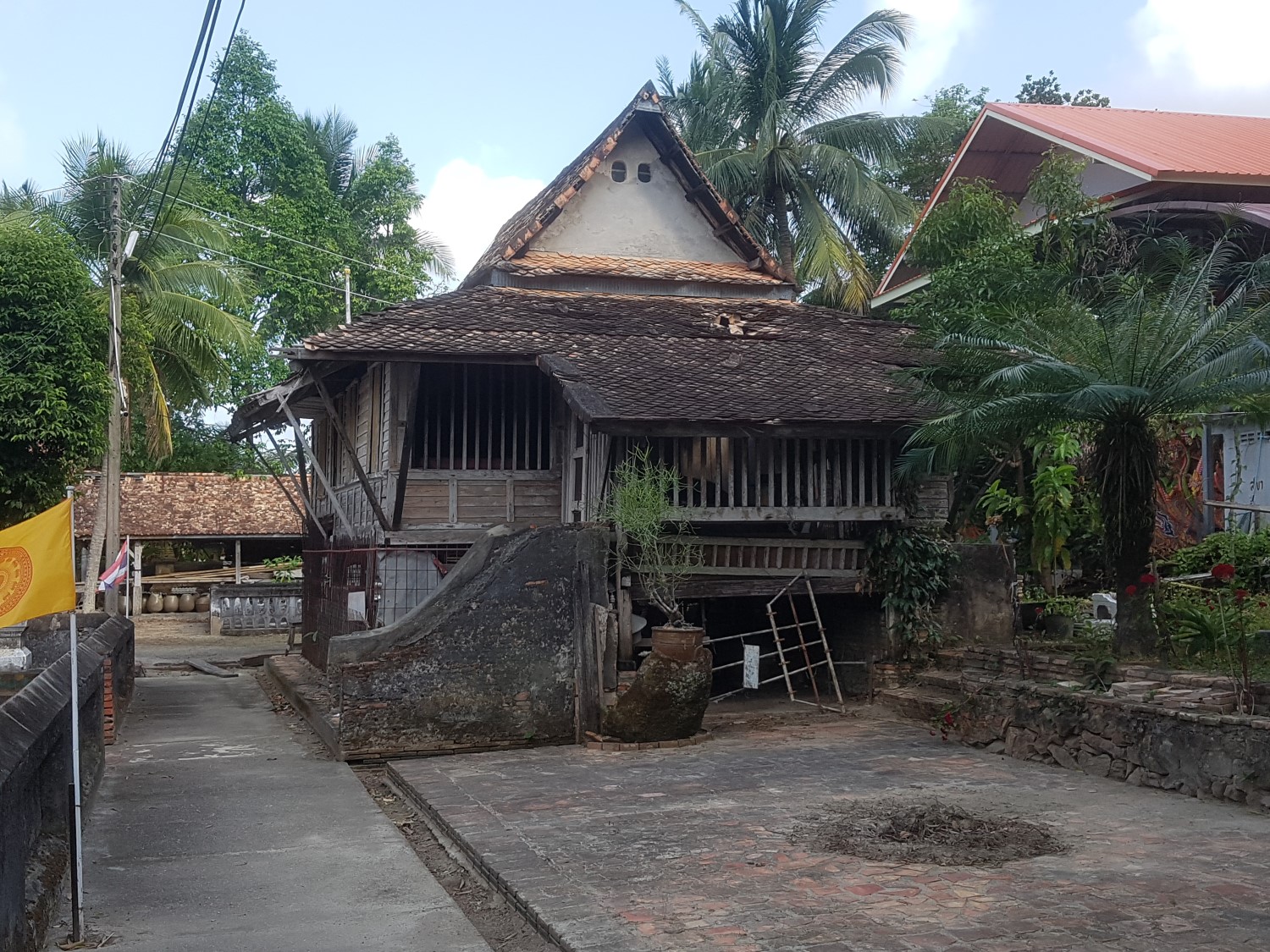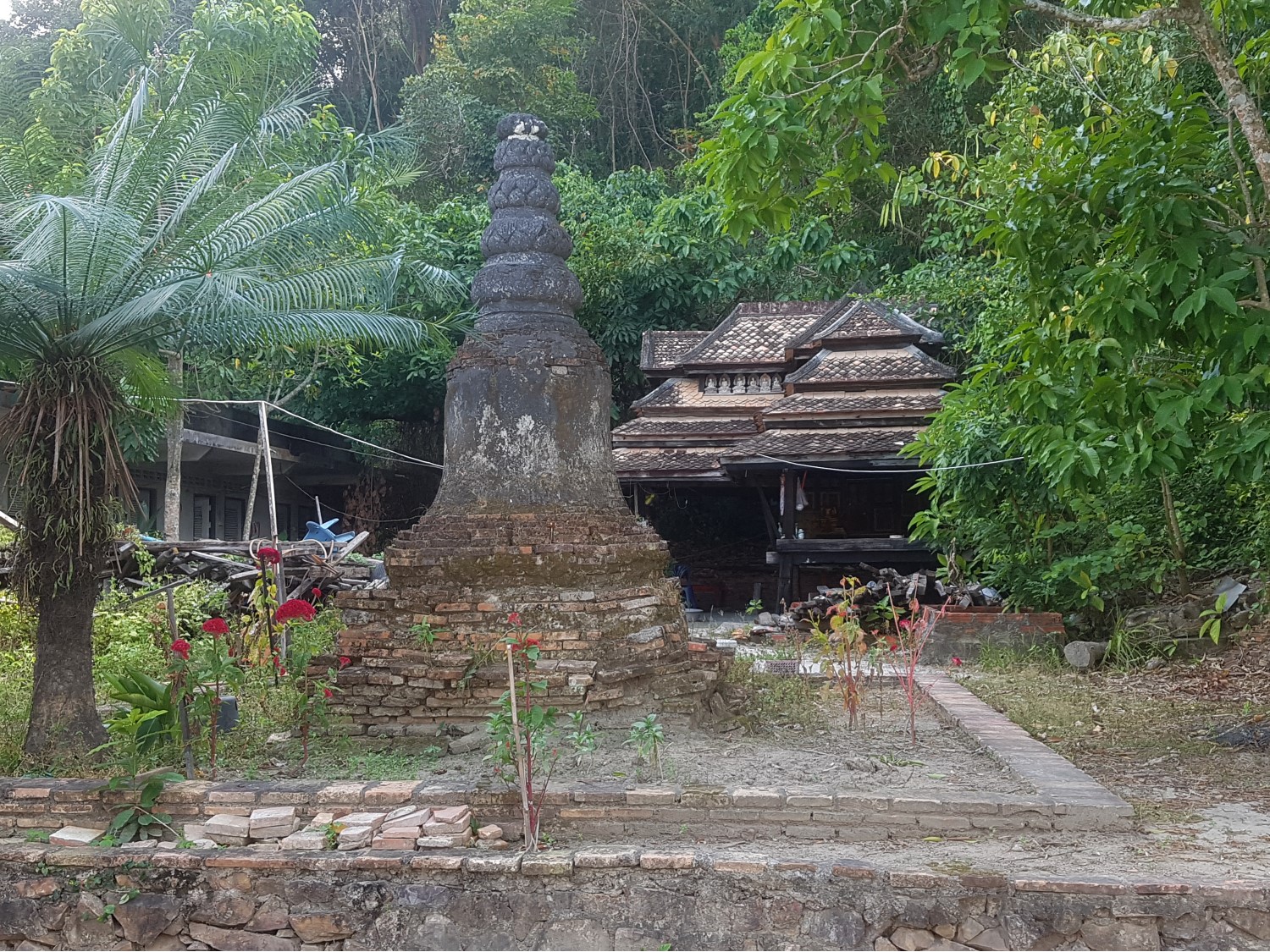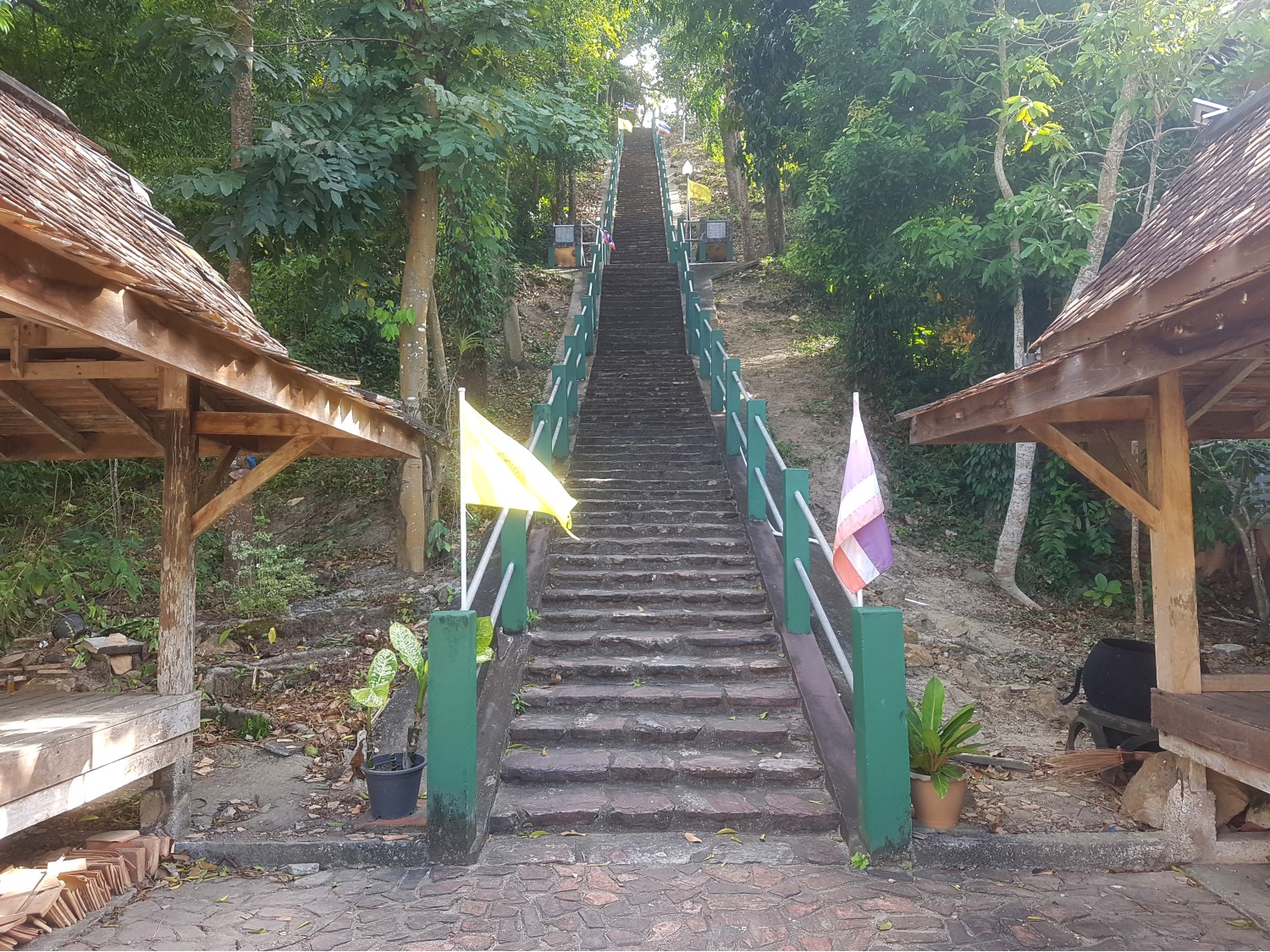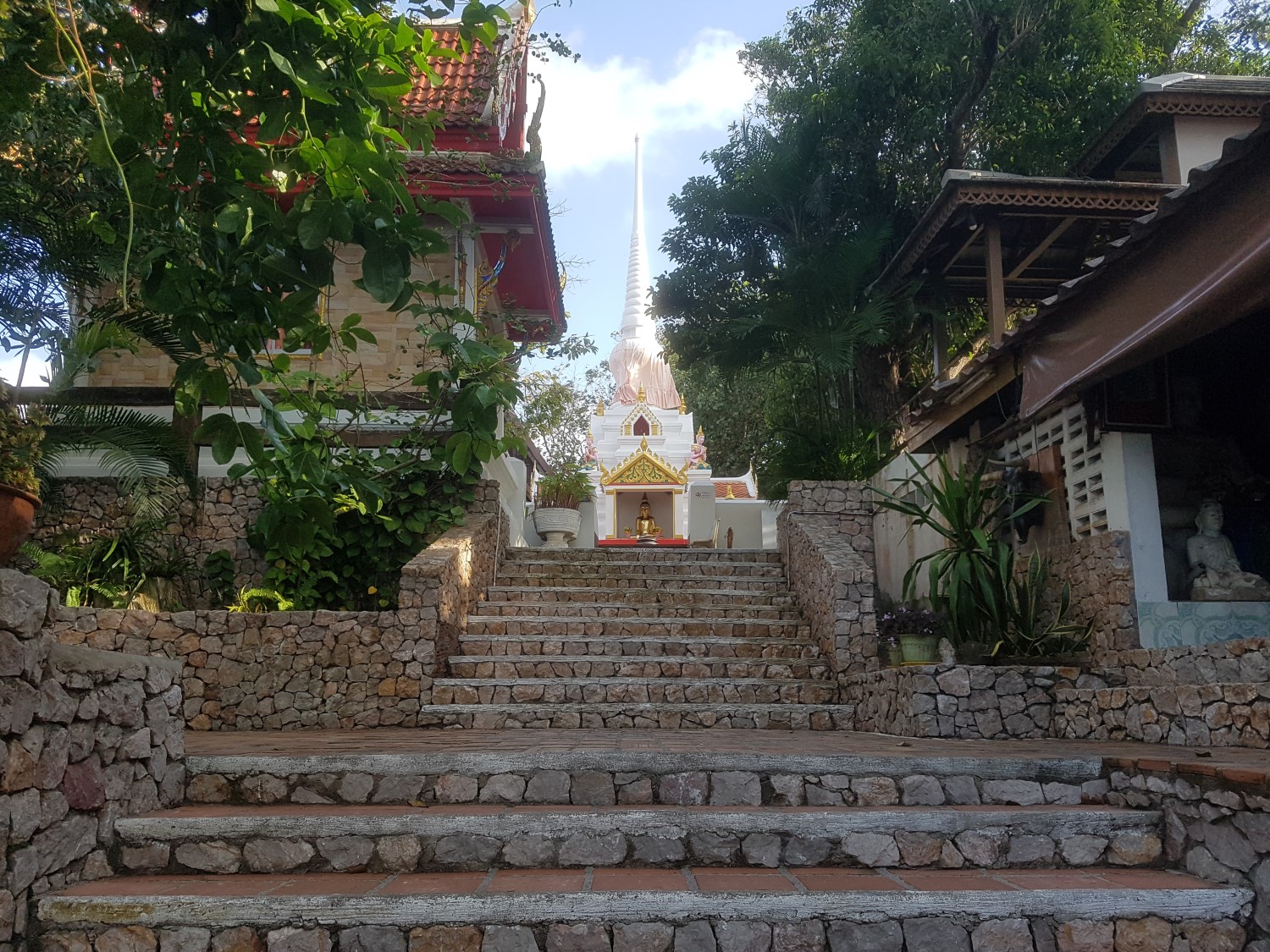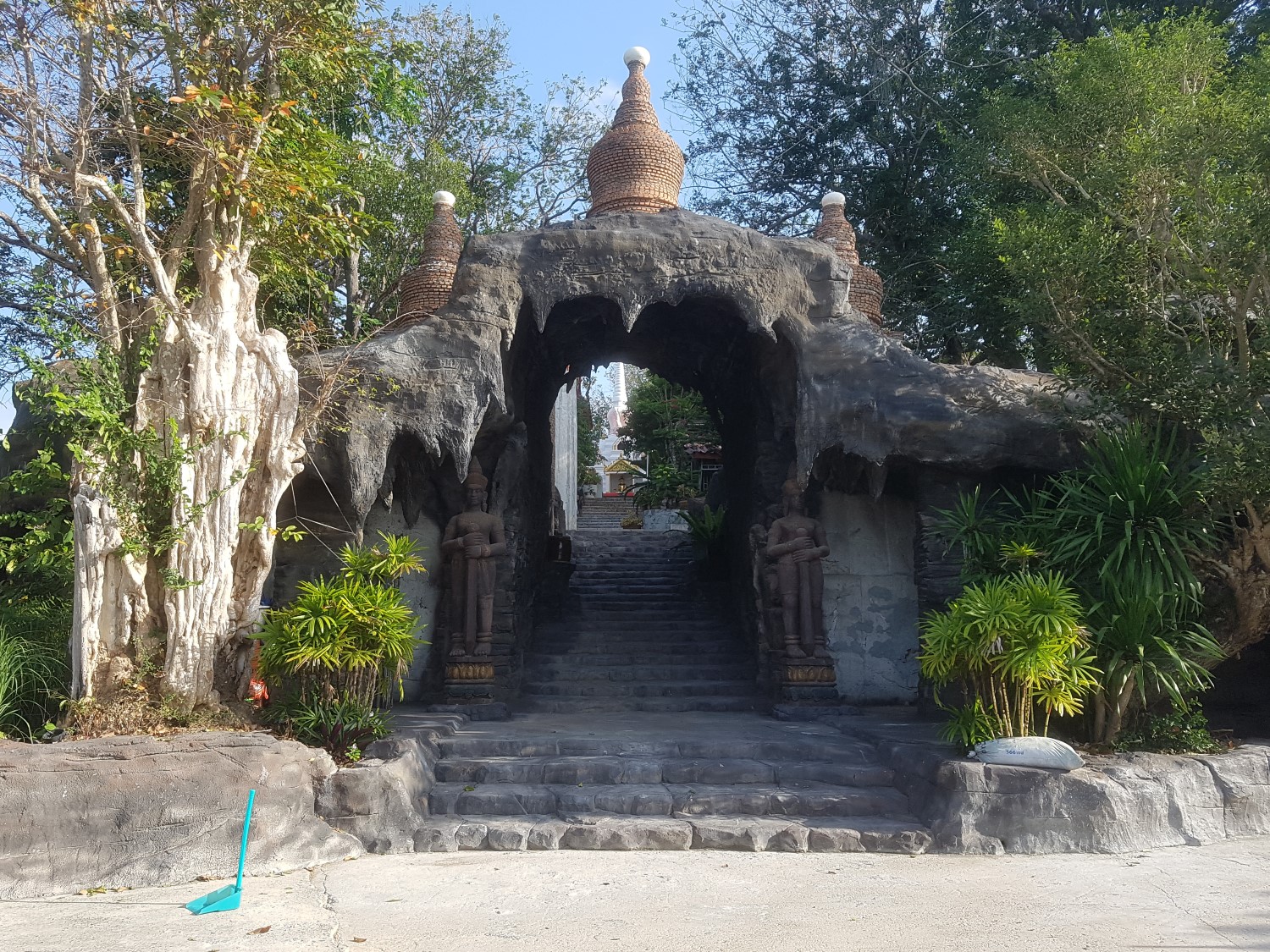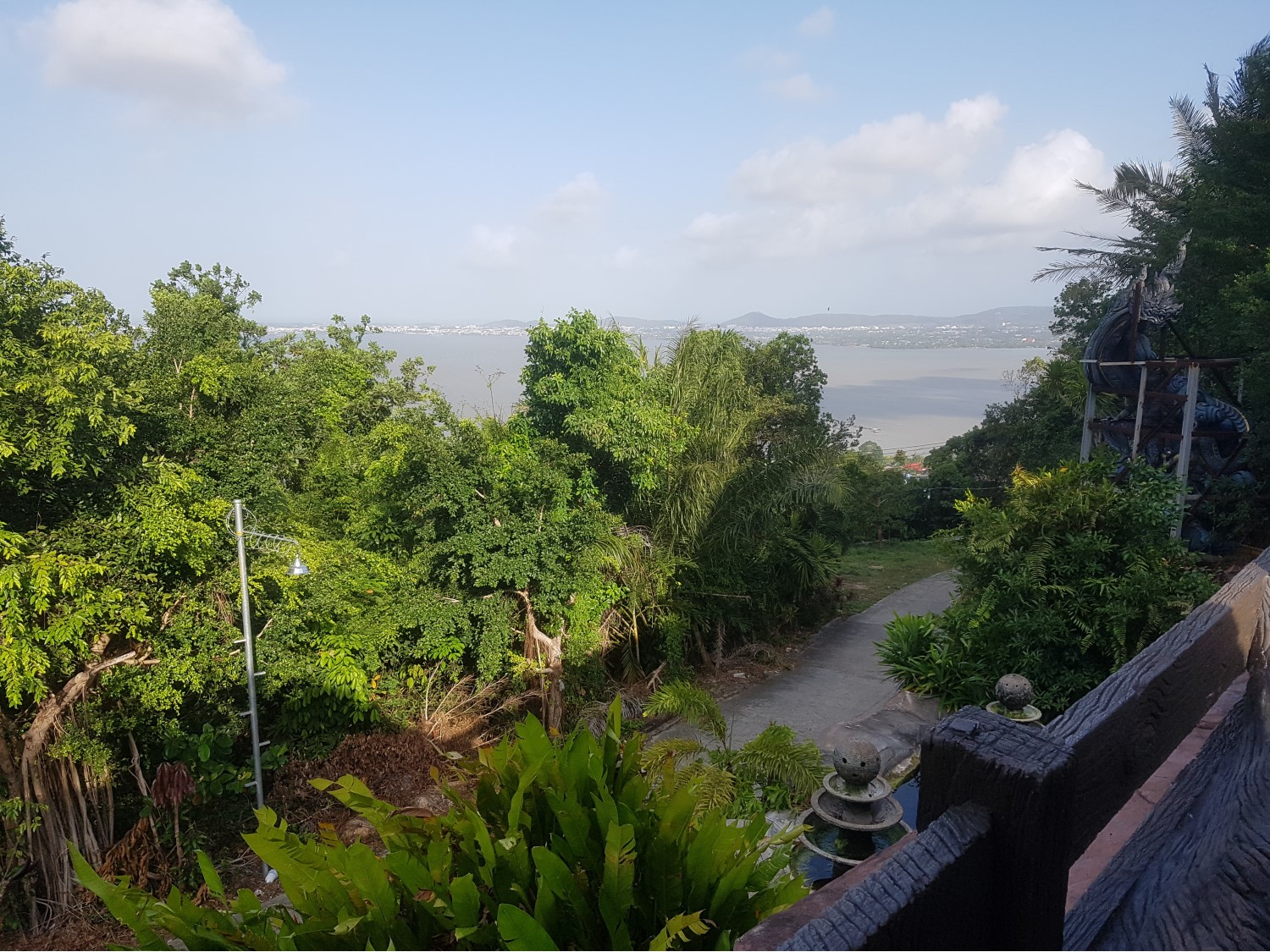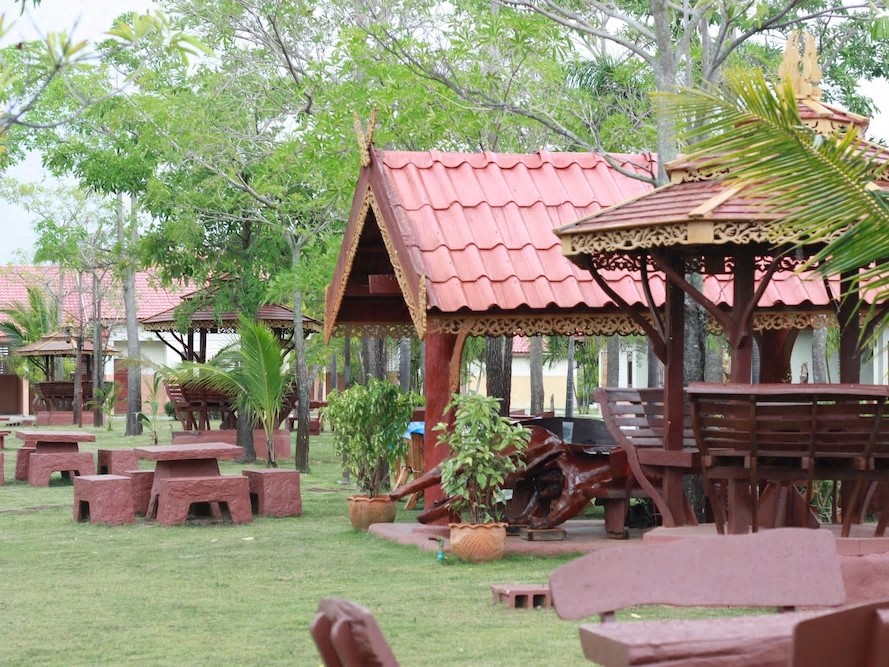
Day 13, Sunday 24 February
Distance Record…….. Reaching Songkhla yesterday, has created a new distance record driving out of Bangkok, if it hadn’t been beaten before in the last few days. 968 kilometres is the new record. The question now is when do we start the journey back? The maximum I am prepared to extend the current tour is until Friday, leaving 4 more nights, one of which will be needed for a stopover. Things will be clearer at the end of today when we’ve had chance to compile an attraction visit list.
Songkhla…….. Not surprisingly, road noise out on the main street remains a distraction but had less of an effect on a proper night’s sleep that I expected. More of an inconvenience though is the slow internet connection this morning, which slows down progress on my blog. Last night I took umbrage over the use of Sengtian Resort as a base to stay for a couple of nights at least. This morning it’s my turn to start packing and prepare to leave. My blog is essentially up to date too. That leaves the door wide open now to go exploring in the city of Songkhla. No visit list has been prepared but probably won’t be required as the city is quite easy to navigate being surrounded by water on three sides.
Our first excursion into Songkhla sees us driving along the coastal road, a straight 5 km route on the seaward side of Songkhla. The absence of bays or coves along this stretch, does not lend itself to beach activity as the beach is narrow and at the time of my visit, with a rough sea whipped up by a stiff breeze. It’s exposure to the elements on this beach has meant that little in the way of infrastructure has developed here. I stop to make a brief video but head further north towards the cape where I find the situation quite different.
Samila Beach…….. When the long Chalathat Beach ends, the coastline turns in towards the cape overlooking the estuary and away from exposure to the rough seas. With sea pine trees offering welcome shade, this is the area to find a good range of leisure activity. Restaurants now dominate the area within view of a wide sandy beach known as Samila Beach. Few foreigners make it here and Thais don’t often sit around in deck chairs so the beach is largely deserted in the heat of the day. Some hardened souls can’t resist the pony rides though, or pay a visit to the Golden Mermaid Sculpture which is an icon on Samila Beach.
Songkhla Municipal Song Thale Park…….. Heading for the furthest point on the cape, we locate Songkhla Municipal Song Thale Park, a landscaped area containing a number of recreational features but especially noted for its view of the estuary. A naga head statue looks out to sea, a recent addition to Songkhla’s culture. It was erected in 2007.
The statue of Krom Luang Chumphon stands majestically on the tip of the cape while nearby is his shrine. He needs no introduction by now with memorials appearing in almost every coastal town and even in inland locations where there is naval presence. Even on this tour he has appeared once before, at Promthep Cape in Phuket.
Admiral Krom Luang Chumphon Khet Udomsak (1880-1923) is considered to be the father of the Royal Thai Navy. He was the 28th son of King Rama V, and he showed an early interest and ability in nautical matters. He spent six years in the UK studying in the Royal Naval Academy. Upon his return to Siam he held a number of important positions in the Royal Thai Navy. He is noted for modernising the navy and creating a professional officer corps. He became the Commander of the Navy in 1922. In addition to his naval studies the Prince is also known as a herbal doctor, a boxer, and artistic painter. He is well remembered in Thailand. The anniversary of his death, May 19, is the Royal Thai Navy Day. He is also known as Admiral Prince Abhakara Kiartivongse. source.
With the tip of the cape overlooking the estuary, I note fishing trawlers on their way out for another haul of fish, their presence amplified by the noise of Chinese firecrackers as they depart. Are they trying to scare the fish into jumping into the nets? Well, no! I soon realise that this is a salute to their ‘Father of the Royal Thai Navy’.
Ideally, we would rather stay in or near the city today but a couple of sites, at least will be closed as is normal for a Monday. We will just have to try again in the morning. As we head back along the estuary side of town, we pass the ferry port and the small naval base there. One standalone site is just ahead.
Tangkuan Hill…….. Tangkuan Hill or Khao Tangkuan is a 100 metre hill at the north end of the Songkhla peninsula. From the high point on the hill, visitors can enjoy a panoramic view of Songkhla town flanked by the Gulf of Thailand with its long white sandy beach and the serene Songkhla Lake which harbours all kinds of ships. The names Tang and Kuan are Chinese words for ‘work and royal service’, were given to the hill after a Chinese trader was appointed as the governor of Songkhla by the king. After that, his descendants governed the town successfully for 150 years.
At the top of the hill stood a significant Royal Pagada or Phra Chedi Luang, first built around the 13th century during the Srivijaya or Tambralinga period. It was restored to its present size and style during the reign of King Rama IV.
Tangkuan Hill is home to a boisterous group of macaques and other wildlife. The monkeys are regarded as the God Rama’s soldiers, so they are well fed and protected. Reaching the base of Tangkuan Hill we are relieved that we don’t need to climb to the top. They have conveniently installed an elevator, the ascent costing 30 baht, while there are Naga staircases provided if you wish. Once on top there is the reconstructed ancient chedi and a few other interesting features. A lighthouse was constructed in the reign of Rama V and completed in 1897. On the lake side, steps lead down to a pavilion, a former residence of Rama IV. The present pavilion (Sala Phra Vihan Deang or Royal Red Hall) was built by King Rama V as a place of pilgrimage and a memorial to his father. The hall was faced with red and while in European style. In March 1935 it was registered as an archaeological site by the Fine Arts Department. Returning to the car, its location proves to have been too much of temptation for those noisy macaques, who would have ripped out all the trims, if it were not for our timely intervention.
Now, still in mid afternoon, there is much more to do in Songkhla but with a number of attractions closed today; we decide to draw a line and focus on where we may find accommodation this evening. We head out of town in the direction from which we arrived.
Ko Yor…….. Ko Yor, also written as Ko Yo, is another island in the Songkhla Lake. With only a ferry connecting Songkhla to the district of Singhanakhon on the opposite bank of the estuary, the shortest land route is across Ko Yor connected to two bridges, Tinnasulanonda I & II. The island is hilly with a coastal road around the island to the west and the highway 408 occupying the eastern shore. The island has a number of attractions we can visit.
Wat Laem Pho…….. Wat Laem Pho is immediately recognisable with its large reclining Buddha at the entrance. The image is not mentioned as contemporary but other buildings at Wat Leam Pho are thought to be over 200 years old. This is certainly likely in the case of the old ubosot and the bell tower. The chedis have been renovated but are thought to date from the same period. This site was registered as of historic importance by the Fine Arts Department in 1996.
As we travel around the coastal road we are treated to excellent views of the Songkhla Lake but we soon discover another old temple.
Wat Tai Yor…….. Wat Tai Yor contains a number of old buildings with no attempt at renovation. If this is an attempt to show the world how things used to be than it has succeeded; even the resident monks live in conditions which would be condemned in modern society. All this is of interest to the historian. There are fine examples of wooden buildings which would have been lost in other circumstances. With some imagination these buildings could be made safe and this temple turned into an open museum.
One feature of this temple I will not be able to view unfortunately. An ancient chedi is located on the hilltop nearby approached by a long Naga staircase. There are just too many steps for me to attempt. Nevertheless this temple’s location beside the lake makes it an interesting attraction.
Wat Khao Kut…….. Venturing further around the island, I am curious as to what there is in the way of accommodation but have not located anything useful on Google Map. What there is, is signposted as ‘homestay’ and I just know from previous experience that this does not translate as comfort or low cost. It’s just a gimmick to allow you to live with local people and learn their customs.
Now approaching the north of the island, we locate Wat Khao Kut, which not only has some history but is well maintained. The main chedi is located on a hill which fortunately can be approached from a number of directions by road. The chedi itself dates back to the aftermath of the 2nd fall of Ayutthaya and Taksin’s success at reunifying the Siamese nation. Many new temples began construction during this period. The role of Taksin is acknowledged here at Wat Khao Kut but the development of this site is attributed to Acharn Klang Seng who has become one of the great monks of Songkhla Province particularly due to the production of Acharn Klang Seng amulets. The circumstances that arose that made these amulets so prized can be found at source. Today the temple is kept spotlessly clean through the devotion of believers.
I only wish I was armed with this story before I discovered this temple but as it is, I’m treated to the most glorious view of the Songkhla Lake and the city and environs in a 360 deg panorama.
KiangLe Resort…….. Now it is really time to find accommodation as we head back to Songkhla. However, there is a disappointing choice without returning to the city itself. Finding that balance between a peaceful location but with shops and other conveniences nearby seems to be a big ask in Songkhla. Heading back to the city, we skirt the Songkhla Lake where things seem a bit more promising. At least we are just on the outskirts of the city and enquire at KiangLe Resort. It seems to meet our needs and we order a larger room. While things are comfortable enough, we still have to find a decent restaurant meaning a trip of a few kilometres. Here a period of austerity ends with a substantial meal. Back at KiangLe I can’t get a reliable internet connection ushering in a period of isolation as I prepare to return to Bangkok. For the first time I just give up even writing notes as I believe our imminent return to civilisation will allow me to catch up.
Next Page.
Distance Record…….. Reaching Songkhla yesterday, has created a new distance record driving out of Bangkok, if it hadn’t been beaten before in the last few days. 968 kilometres is the new record. The question now is when do we start the journey back? The maximum I am prepared to extend the current tour is until Friday, leaving 4 more nights, one of which will be needed for a stopover. Things will be clearer at the end of today when we’ve had chance to compile an attraction visit list.
Songkhla…….. Not surprisingly, road noise out on the main street remains a distraction but had less of an effect on a proper night’s sleep that I expected. More of an inconvenience though is the slow internet connection this morning, which slows down progress on my blog. Last night I took umbrage over the use of Sengtian Resort as a base to stay for a couple of nights at least. This morning it’s my turn to start packing and prepare to leave. My blog is essentially up to date too. That leaves the door wide open now to go exploring in the city of Songkhla. No visit list has been prepared but probably won’t be required as the city is quite easy to navigate being surrounded by water on three sides.
Our first excursion into Songkhla sees us driving along the coastal road, a straight 5 km route on the seaward side of Songkhla. The absence of bays or coves along this stretch, does not lend itself to beach activity as the beach is narrow and at the time of my visit, with a rough sea whipped up by a stiff breeze. It’s exposure to the elements on this beach has meant that little in the way of infrastructure has developed here. I stop to make a brief video but head further north towards the cape where I find the situation quite different.
Samila Beach…….. When the long Chalathat Beach ends, the coastline turns in towards the cape overlooking the estuary and away from exposure to the rough seas. With sea pine trees offering welcome shade, this is the area to find a good range of leisure activity. Restaurants now dominate the area within view of a wide sandy beach known as Samila Beach. Few foreigners make it here and Thais don’t often sit around in deck chairs so the beach is largely deserted in the heat of the day. Some hardened souls can’t resist the pony rides though, or pay a visit to the Golden Mermaid Sculpture which is an icon on Samila Beach.
Songkhla Municipal Song Thale Park…….. Heading for the furthest point on the cape, we locate Songkhla Municipal Song Thale Park, a landscaped area containing a number of recreational features but especially noted for its view of the estuary. A naga head statue looks out to sea, a recent addition to Songkhla’s culture. It was erected in 2007.
The statue of Krom Luang Chumphon stands majestically on the tip of the cape while nearby is his shrine. He needs no introduction by now with memorials appearing in almost every coastal town and even in inland locations where there is naval presence. Even on this tour he has appeared once before, at Promthep Cape in Phuket.
Admiral Krom Luang Chumphon Khet Udomsak (1880-1923) is considered to be the father of the Royal Thai Navy. He was the 28th son of King Rama V, and he showed an early interest and ability in nautical matters. He spent six years in the UK studying in the Royal Naval Academy. Upon his return to Siam he held a number of important positions in the Royal Thai Navy. He is noted for modernising the navy and creating a professional officer corps. He became the Commander of the Navy in 1922. In addition to his naval studies the Prince is also known as a herbal doctor, a boxer, and artistic painter. He is well remembered in Thailand. The anniversary of his death, May 19, is the Royal Thai Navy Day. He is also known as Admiral Prince Abhakara Kiartivongse. source.
With the tip of the cape overlooking the estuary, I note fishing trawlers on their way out for another haul of fish, their presence amplified by the noise of Chinese firecrackers as they depart. Are they trying to scare the fish into jumping into the nets? Well, no! I soon realise that this is a salute to their ‘Father of the Royal Thai Navy’.
Ideally, we would rather stay in or near the city today but a couple of sites, at least will be closed as is normal for a Monday. We will just have to try again in the morning. As we head back along the estuary side of town, we pass the ferry port and the small naval base there. One standalone site is just ahead.
Tangkuan Hill…….. Tangkuan Hill or Khao Tangkuan is a 100 metre hill at the north end of the Songkhla peninsula. From the high point on the hill, visitors can enjoy a panoramic view of Songkhla town flanked by the Gulf of Thailand with its long white sandy beach and the serene Songkhla Lake which harbours all kinds of ships. The names Tang and Kuan are Chinese words for ‘work and royal service’, were given to the hill after a Chinese trader was appointed as the governor of Songkhla by the king. After that, his descendants governed the town successfully for 150 years.
At the top of the hill stood a significant Royal Pagada or Phra Chedi Luang, first built around the 13th century during the Srivijaya or Tambralinga period. It was restored to its present size and style during the reign of King Rama IV.
Tangkuan Hill is home to a boisterous group of macaques and other wildlife. The monkeys are regarded as the God Rama’s soldiers, so they are well fed and protected. Reaching the base of Tangkuan Hill we are relieved that we don’t need to climb to the top. They have conveniently installed an elevator, the ascent costing 30 baht, while there are Naga staircases provided if you wish. Once on top there is the reconstructed ancient chedi and a few other interesting features. A lighthouse was constructed in the reign of Rama V and completed in 1897. On the lake side, steps lead down to a pavilion, a former residence of Rama IV. The present pavilion (Sala Phra Vihan Deang or Royal Red Hall) was built by King Rama V as a place of pilgrimage and a memorial to his father. The hall was faced with red and while in European style. In March 1935 it was registered as an archaeological site by the Fine Arts Department. Returning to the car, its location proves to have been too much of temptation for those noisy macaques, who would have ripped out all the trims, if it were not for our timely intervention.
Now, still in mid afternoon, there is much more to do in Songkhla but with a number of attractions closed today; we decide to draw a line and focus on where we may find accommodation this evening. We head out of town in the direction from which we arrived.
Ko Yor…….. Ko Yor, also written as Ko Yo, is another island in the Songkhla Lake. With only a ferry connecting Songkhla to the district of Singhanakhon on the opposite bank of the estuary, the shortest land route is across Ko Yor connected to two bridges, Tinnasulanonda I & II. The island is hilly with a coastal road around the island to the west and the highway 408 occupying the eastern shore. The island has a number of attractions we can visit.
Wat Laem Pho…….. Wat Laem Pho is immediately recognisable with its large reclining Buddha at the entrance. The image is not mentioned as contemporary but other buildings at Wat Leam Pho are thought to be over 200 years old. This is certainly likely in the case of the old ubosot and the bell tower. The chedis have been renovated but are thought to date from the same period. This site was registered as of historic importance by the Fine Arts Department in 1996.
As we travel around the coastal road we are treated to excellent views of the Songkhla Lake but we soon discover another old temple.
Wat Tai Yor…….. Wat Tai Yor contains a number of old buildings with no attempt at renovation. If this is an attempt to show the world how things used to be than it has succeeded; even the resident monks live in conditions which would be condemned in modern society. All this is of interest to the historian. There are fine examples of wooden buildings which would have been lost in other circumstances. With some imagination these buildings could be made safe and this temple turned into an open museum.
One feature of this temple I will not be able to view unfortunately. An ancient chedi is located on the hilltop nearby approached by a long Naga staircase. There are just too many steps for me to attempt. Nevertheless this temple’s location beside the lake makes it an interesting attraction.
Wat Khao Kut…….. Venturing further around the island, I am curious as to what there is in the way of accommodation but have not located anything useful on Google Map. What there is, is signposted as ‘homestay’ and I just know from previous experience that this does not translate as comfort or low cost. It’s just a gimmick to allow you to live with local people and learn their customs.
Now approaching the north of the island, we locate Wat Khao Kut, which not only has some history but is well maintained. The main chedi is located on a hill which fortunately can be approached from a number of directions by road. The chedi itself dates back to the aftermath of the 2nd fall of Ayutthaya and Taksin’s success at reunifying the Siamese nation. Many new temples began construction during this period. The role of Taksin is acknowledged here at Wat Khao Kut but the development of this site is attributed to Acharn Klang Seng who has become one of the great monks of Songkhla Province particularly due to the production of Acharn Klang Seng amulets. The circumstances that arose that made these amulets so prized can be found at source. Today the temple is kept spotlessly clean through the devotion of believers.
I only wish I was armed with this story before I discovered this temple but as it is, I’m treated to the most glorious view of the Songkhla Lake and the city and environs in a 360 deg panorama.
KiangLe Resort…….. Now it is really time to find accommodation as we head back to Songkhla. However, there is a disappointing choice without returning to the city itself. Finding that balance between a peaceful location but with shops and other conveniences nearby seems to be a big ask in Songkhla. Heading back to the city, we skirt the Songkhla Lake where things seem a bit more promising. At least we are just on the outskirts of the city and enquire at KiangLe Resort. It seems to meet our needs and we order a larger room. While things are comfortable enough, we still have to find a decent restaurant meaning a trip of a few kilometres. Here a period of austerity ends with a substantial meal. Back at KiangLe I can’t get a reliable internet connection ushering in a period of isolation as I prepare to return to Bangkok. For the first time I just give up even writing notes as I believe our imminent return to civilisation will allow me to catch up.
Next Page.
